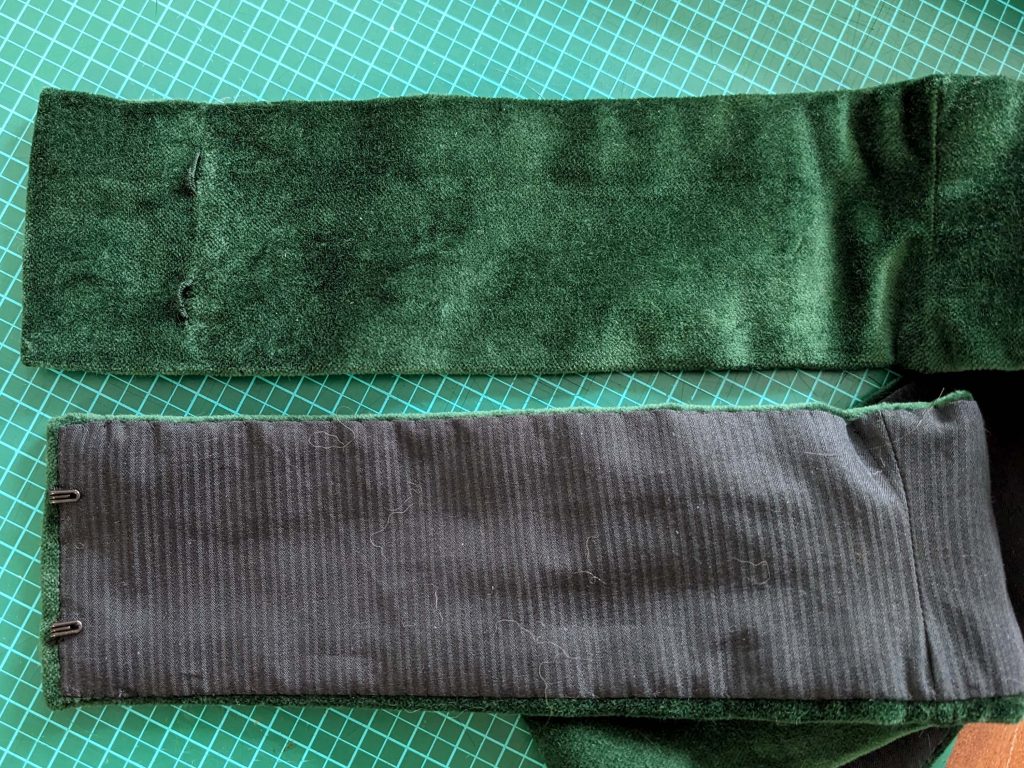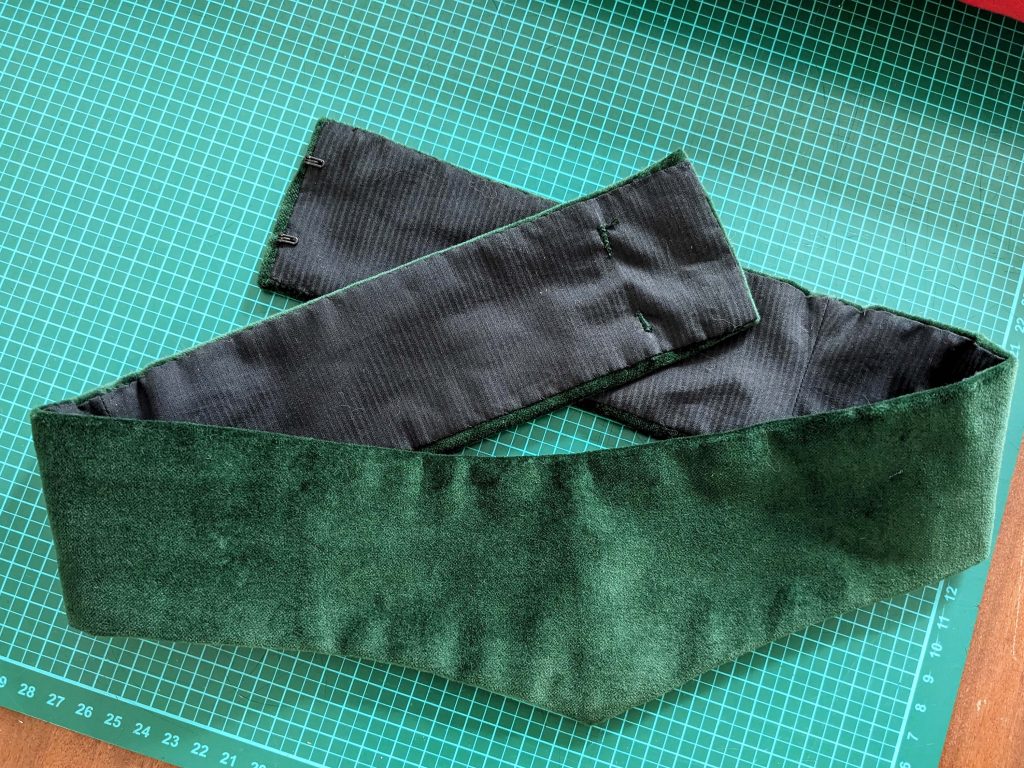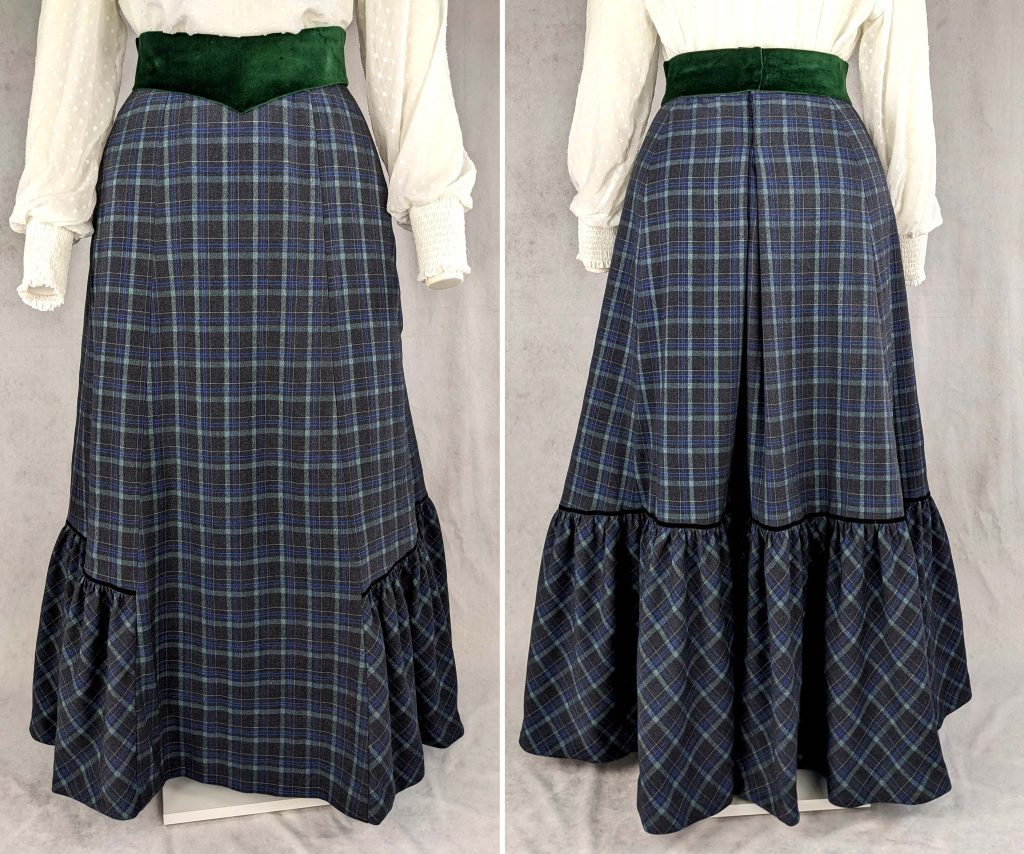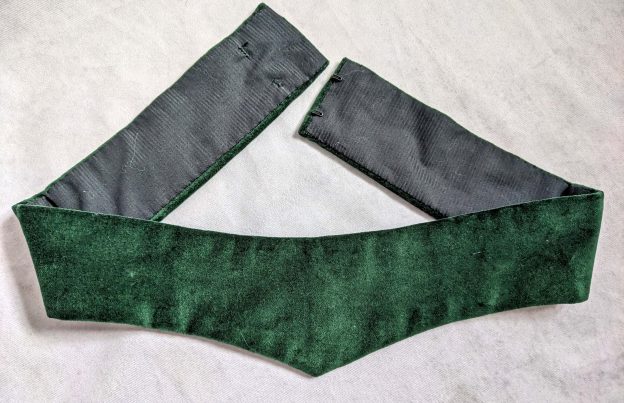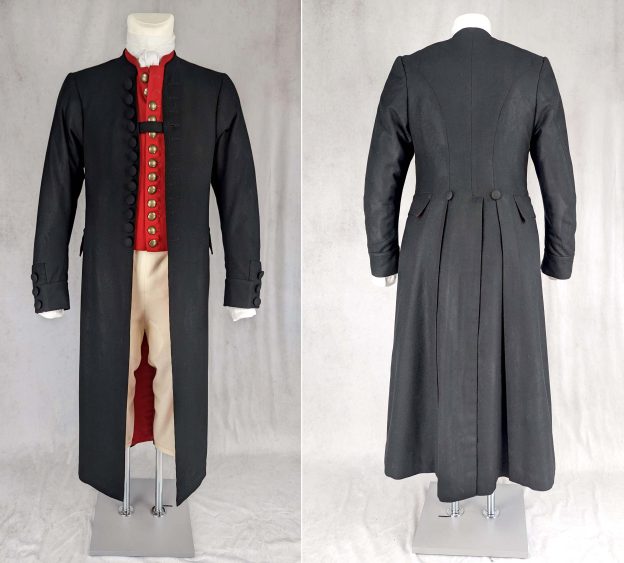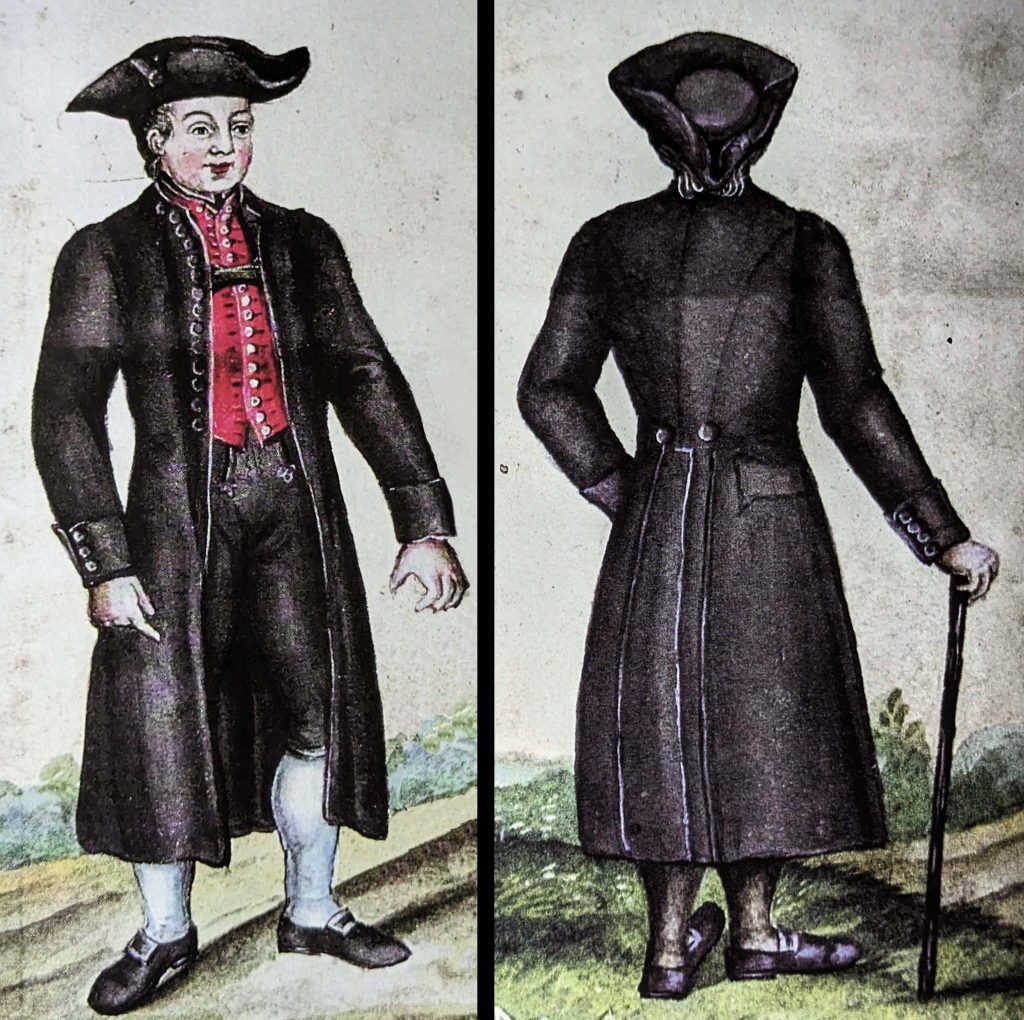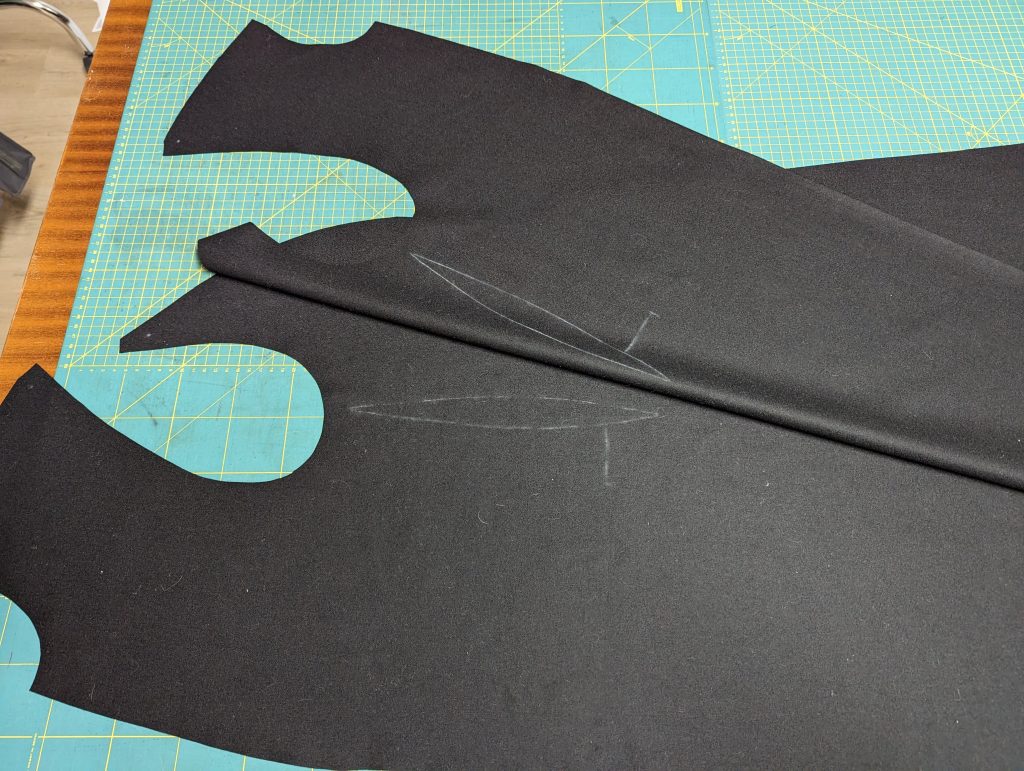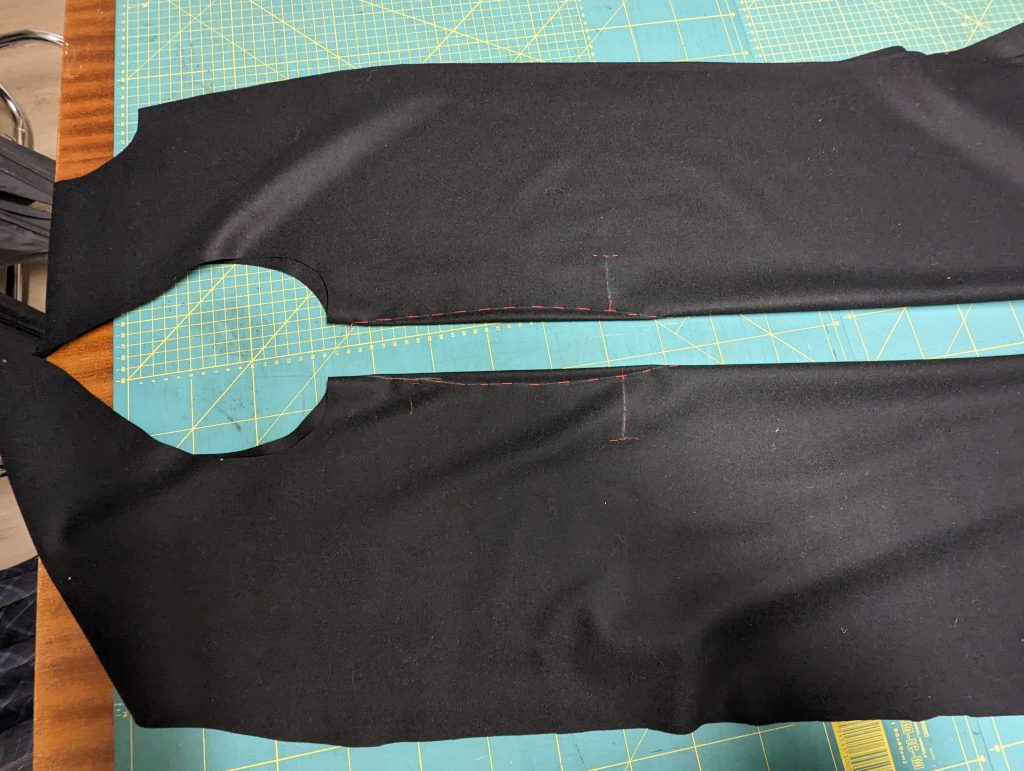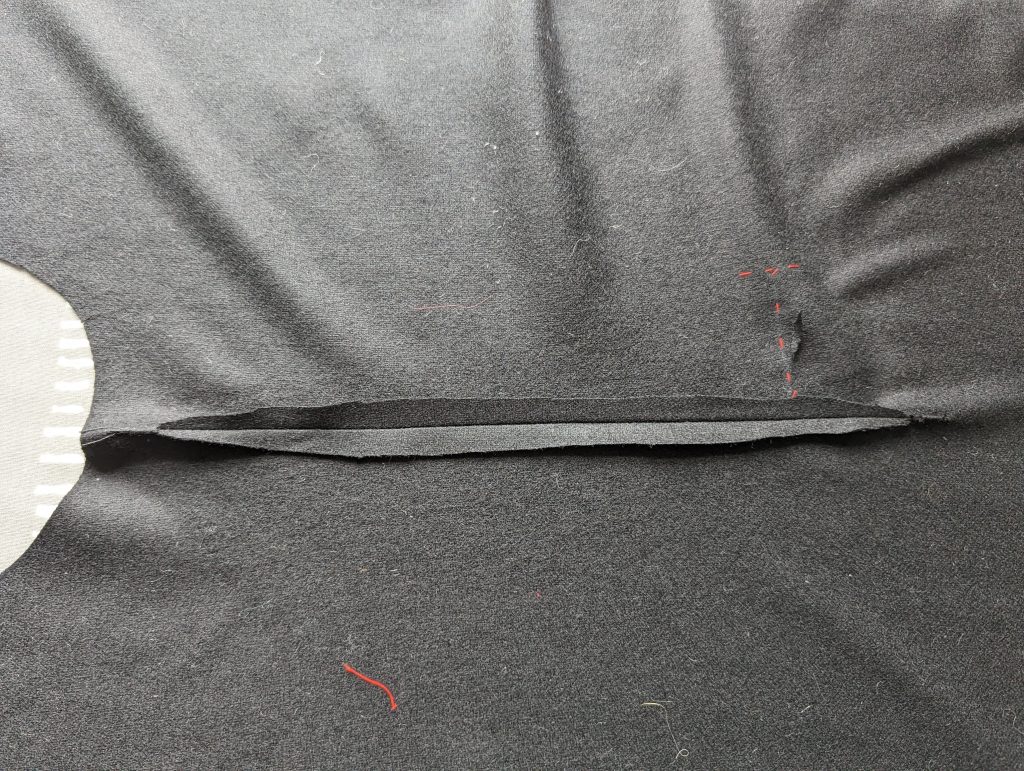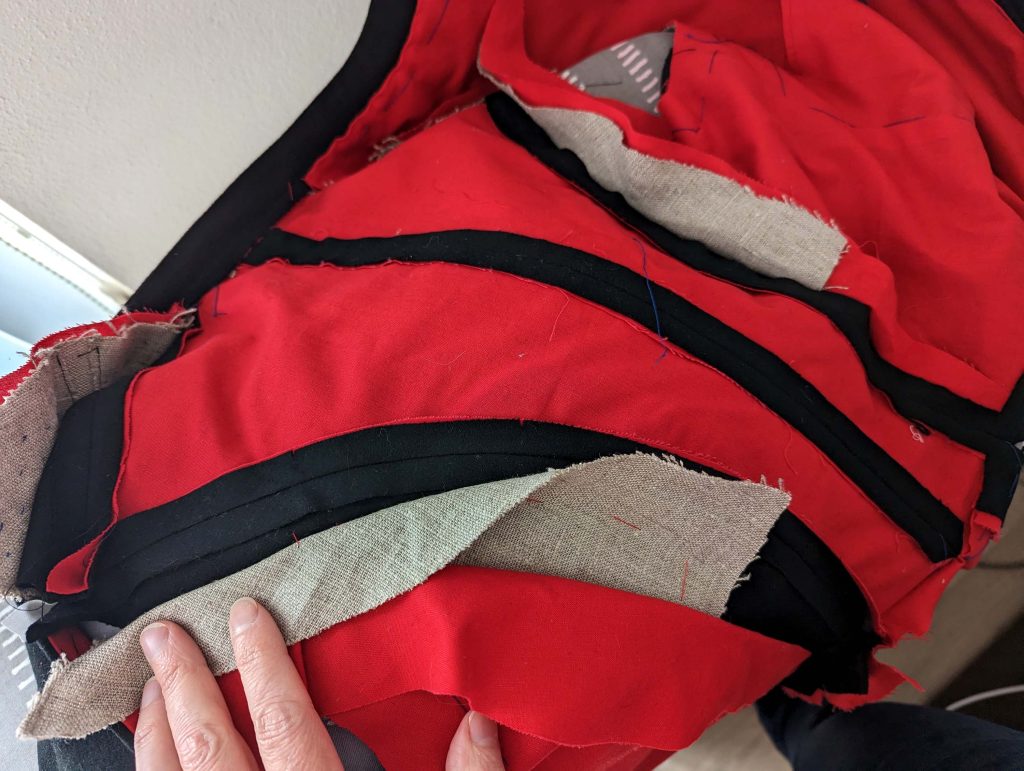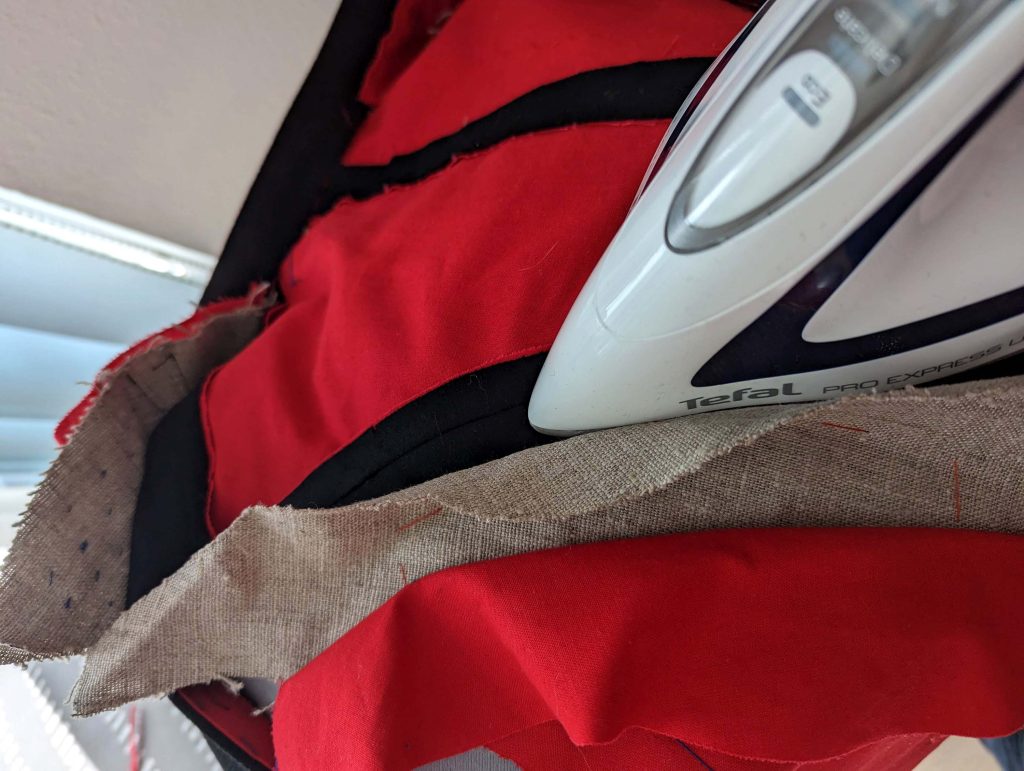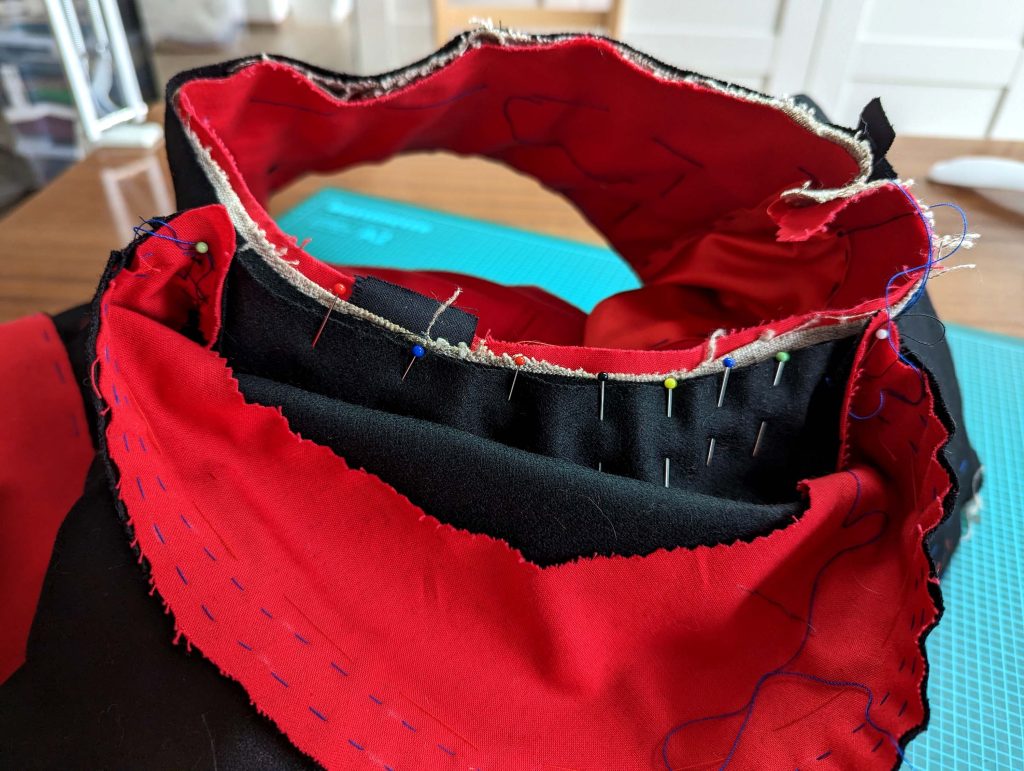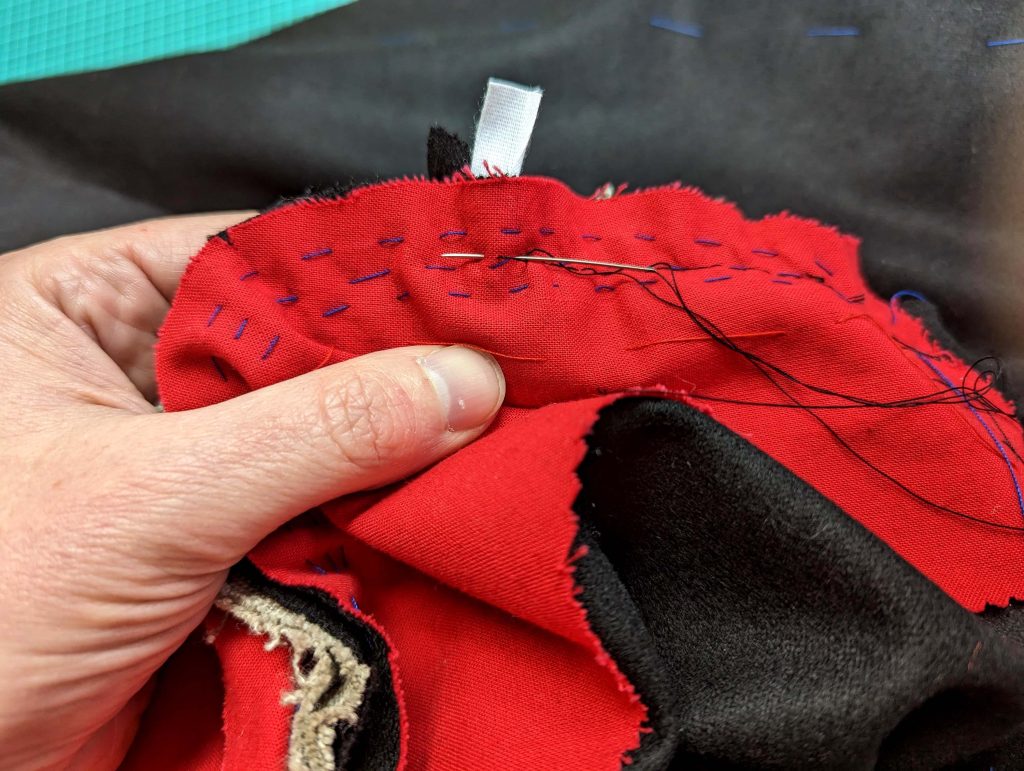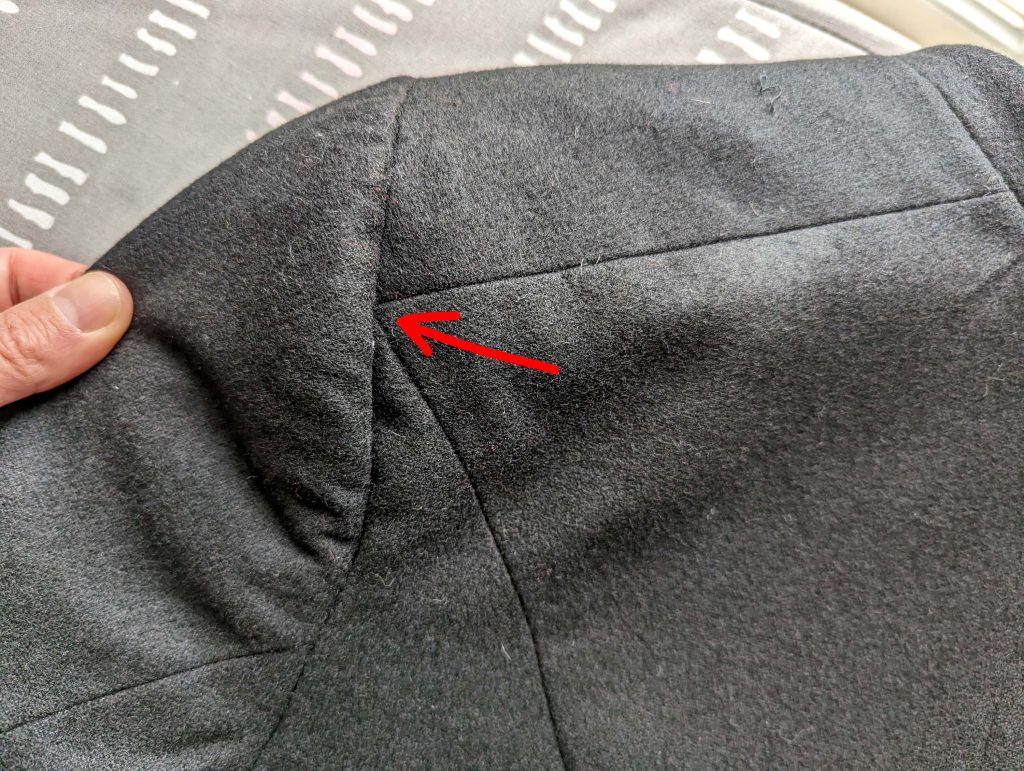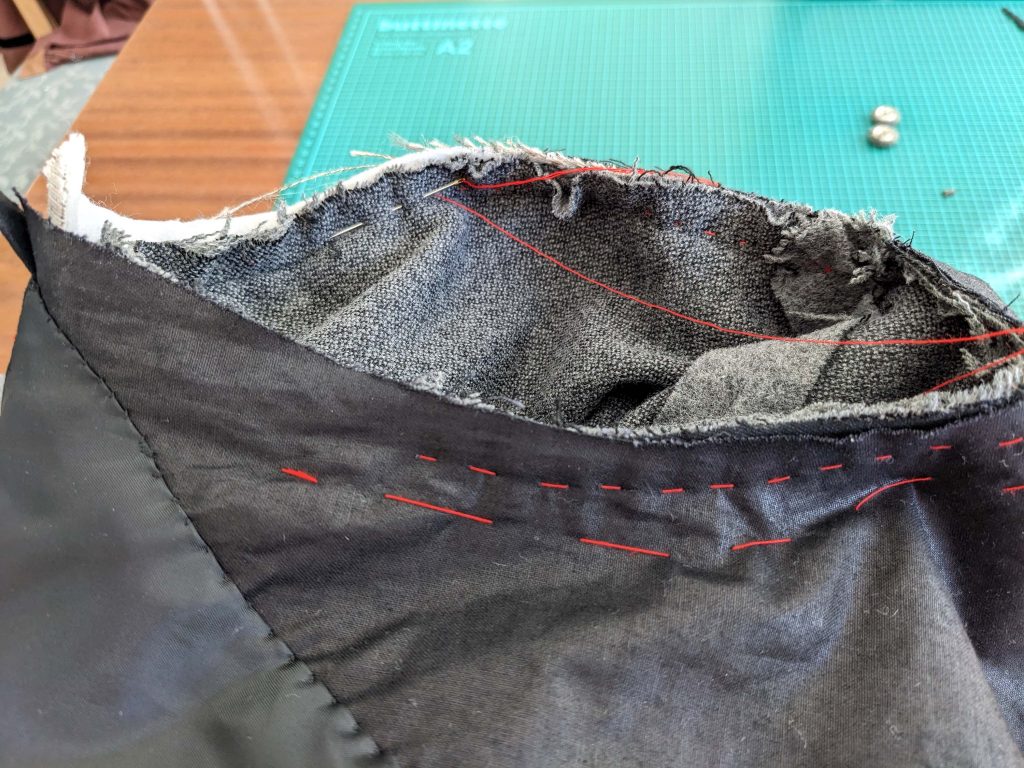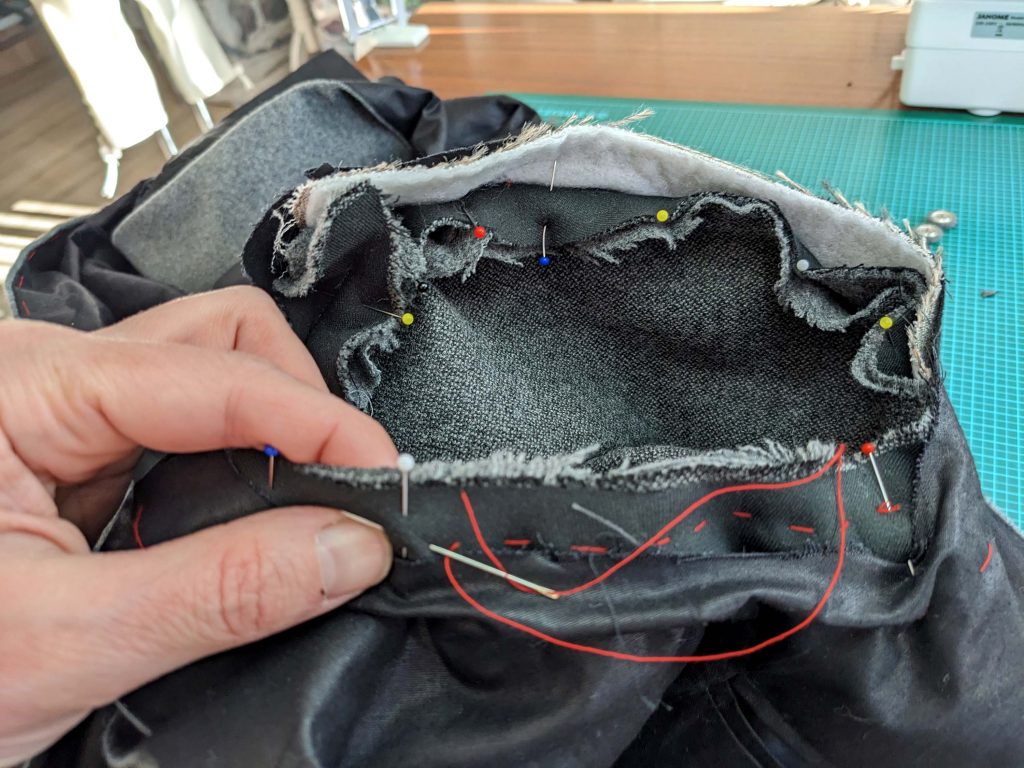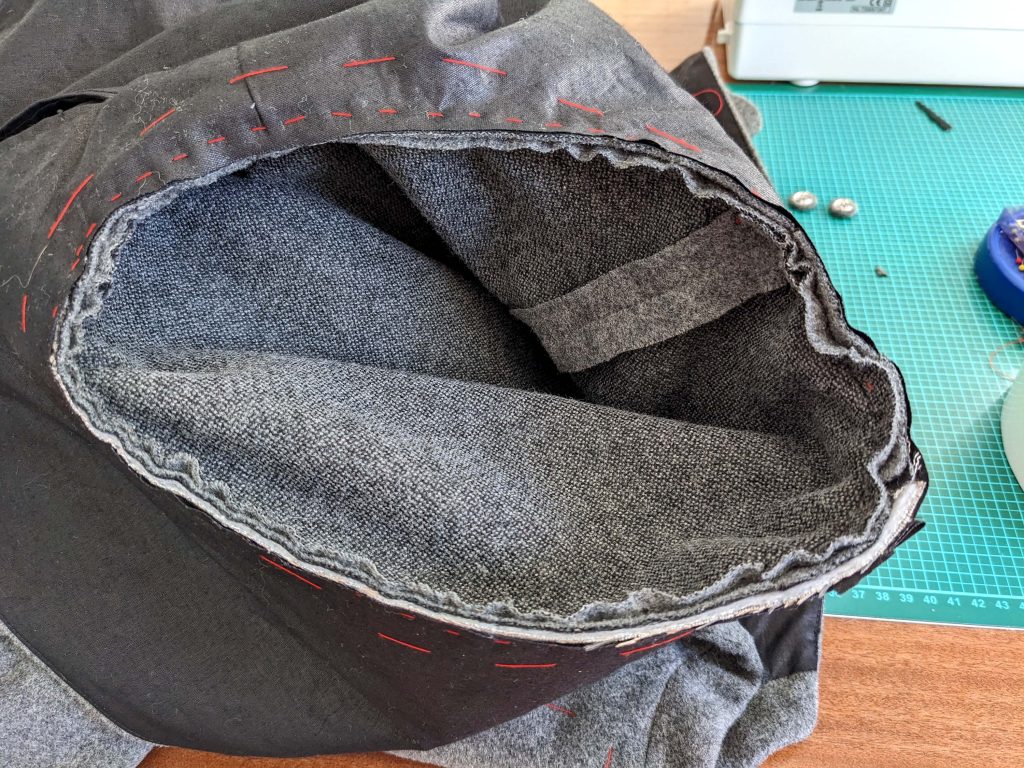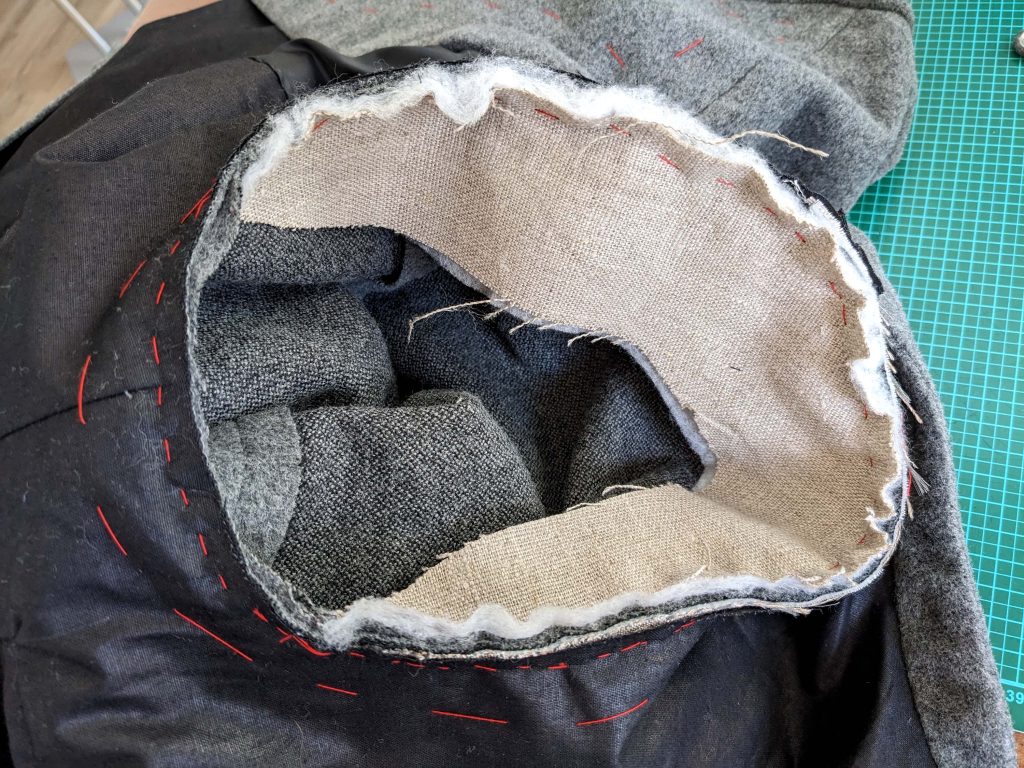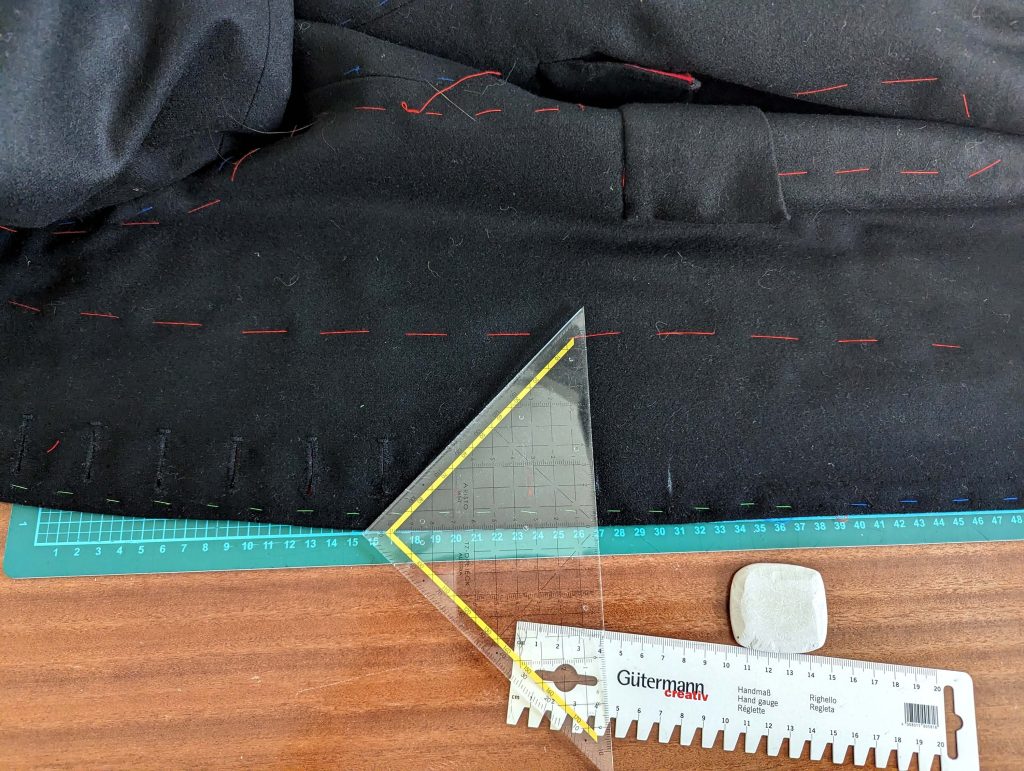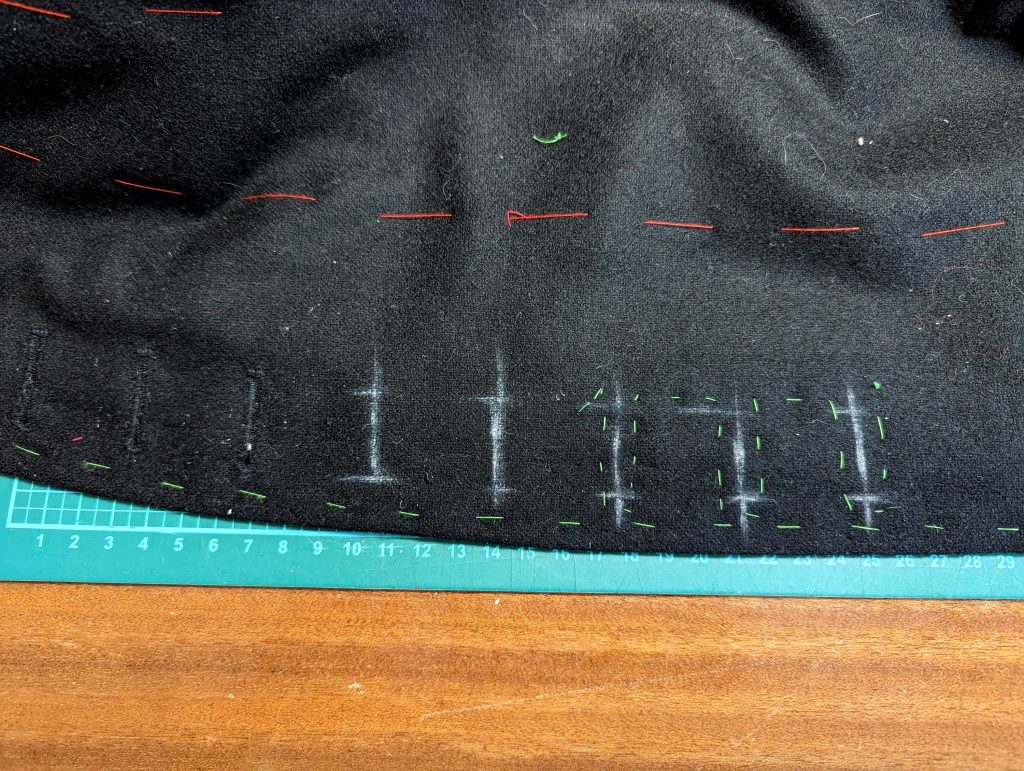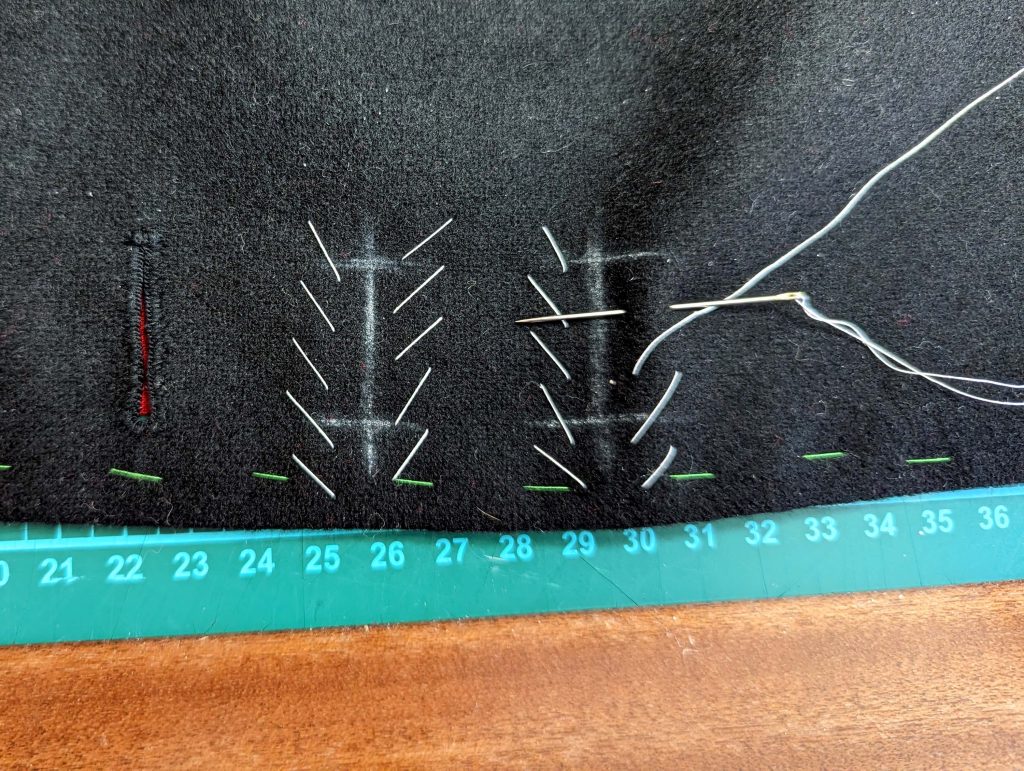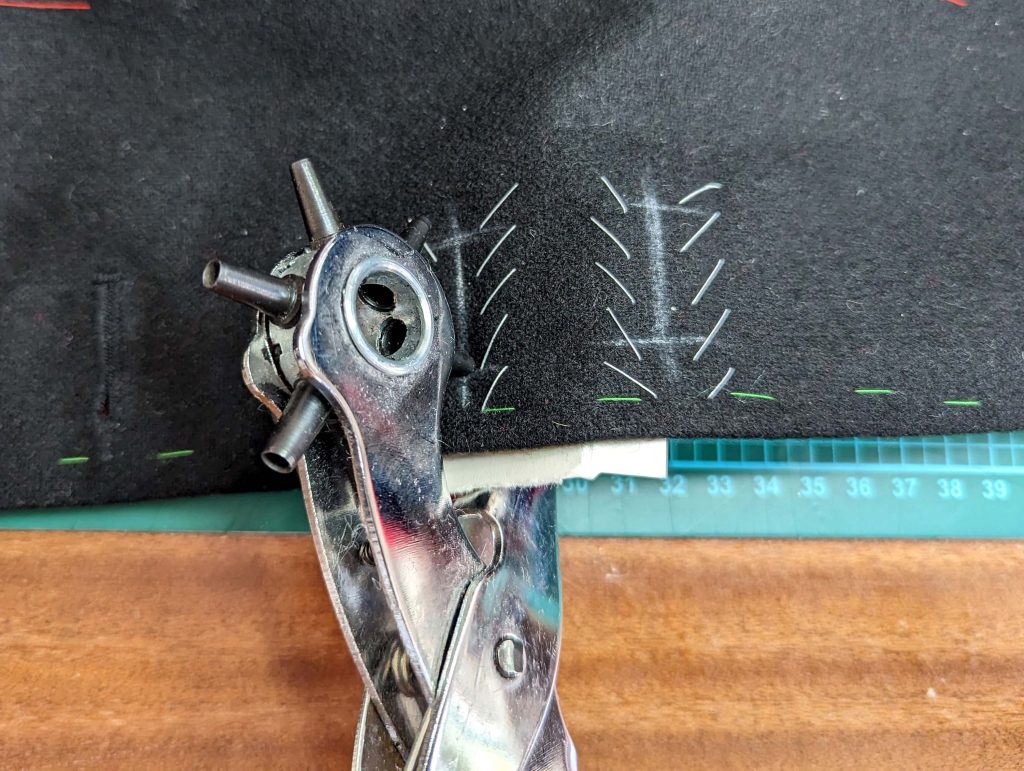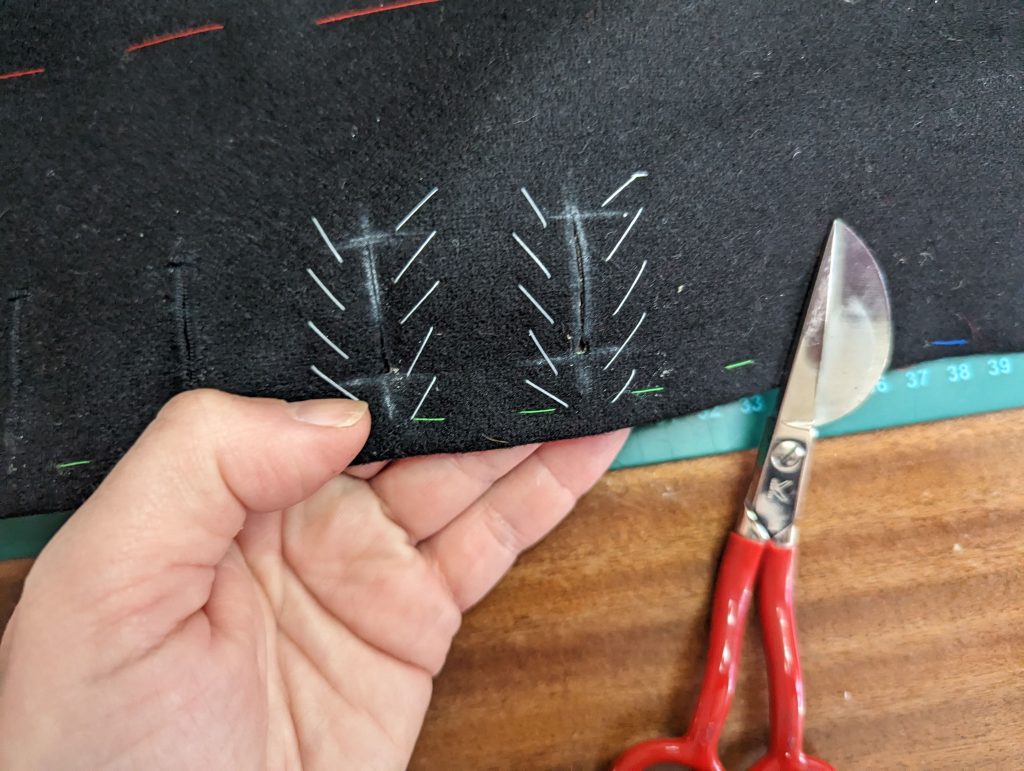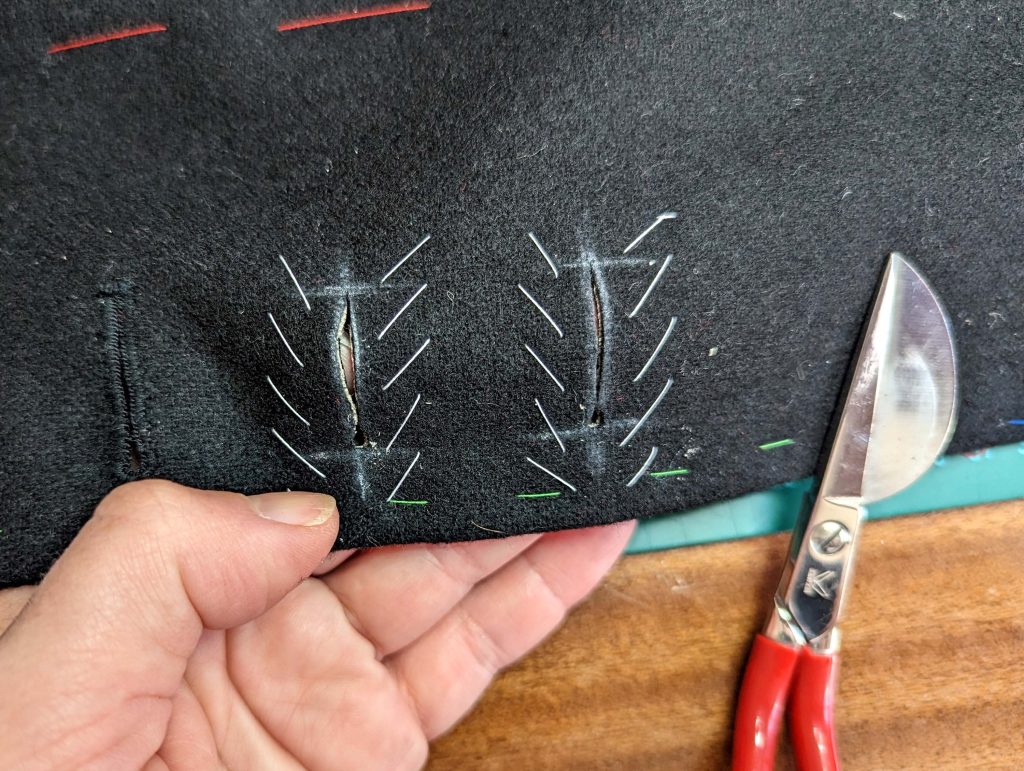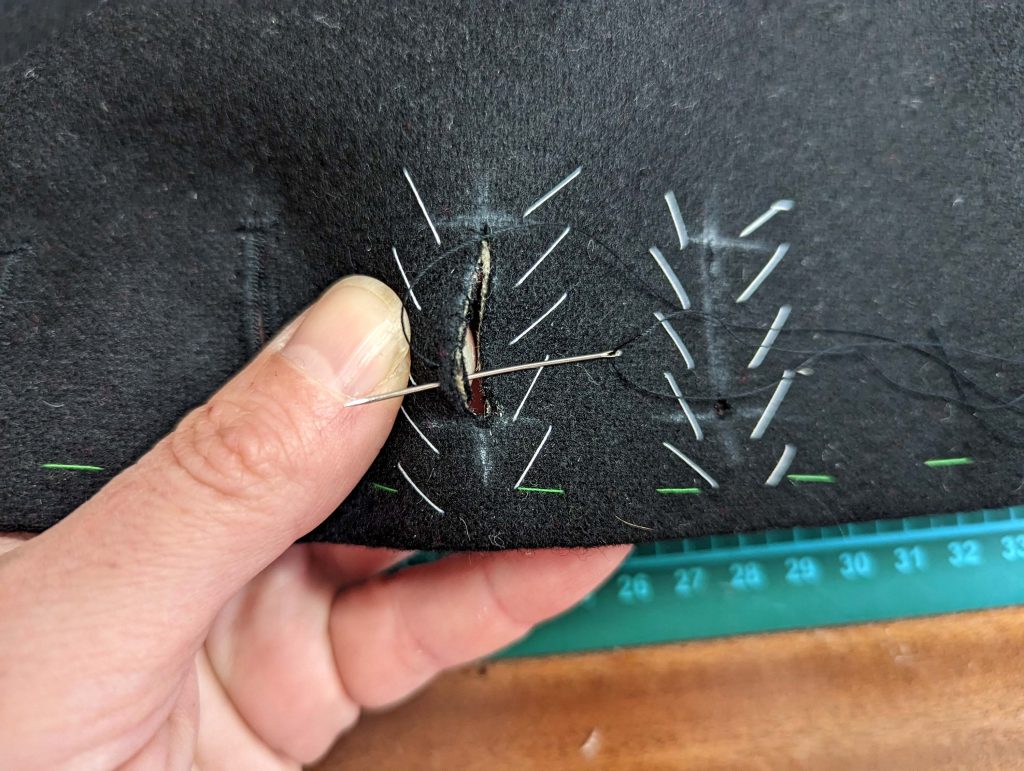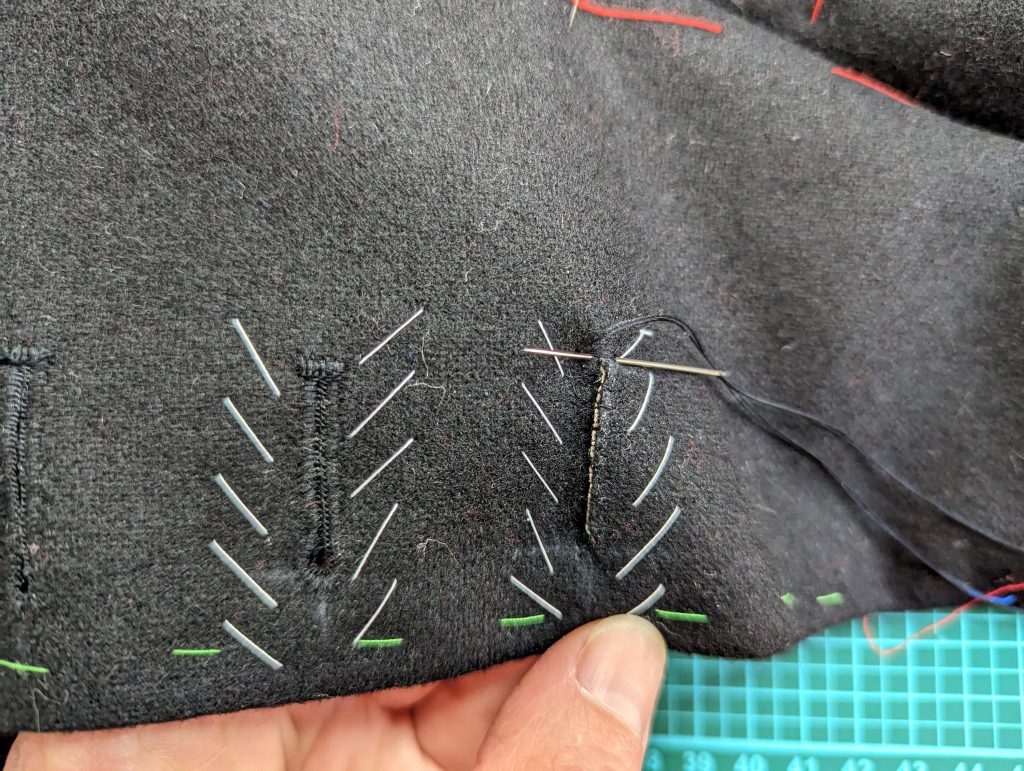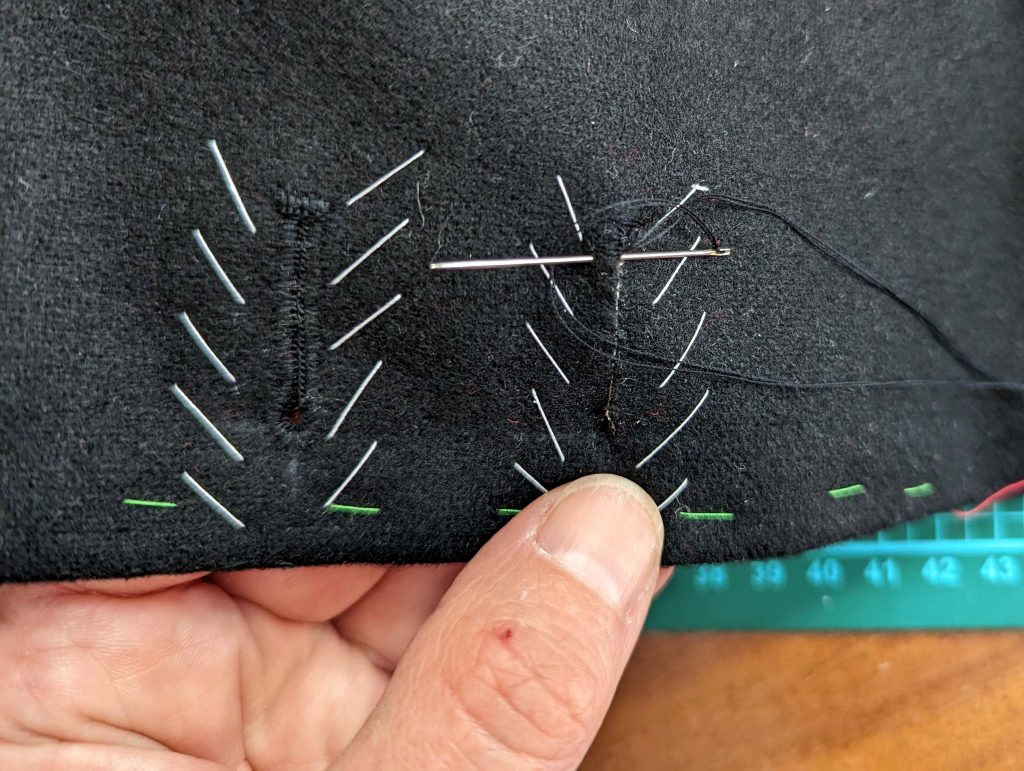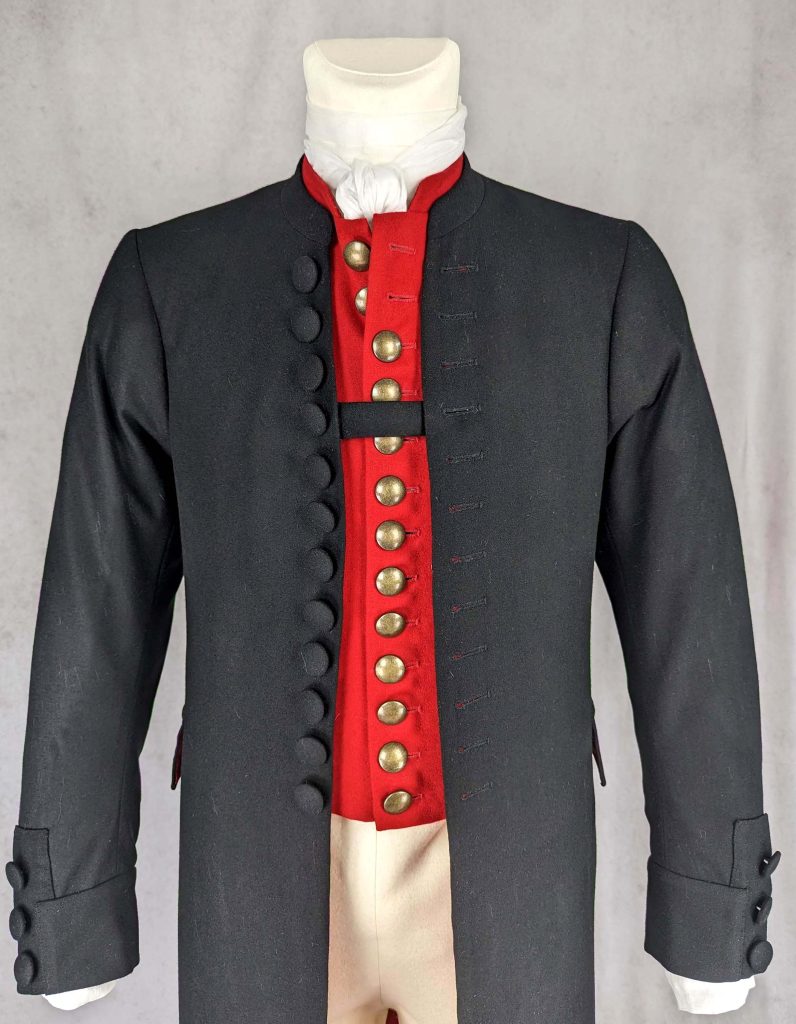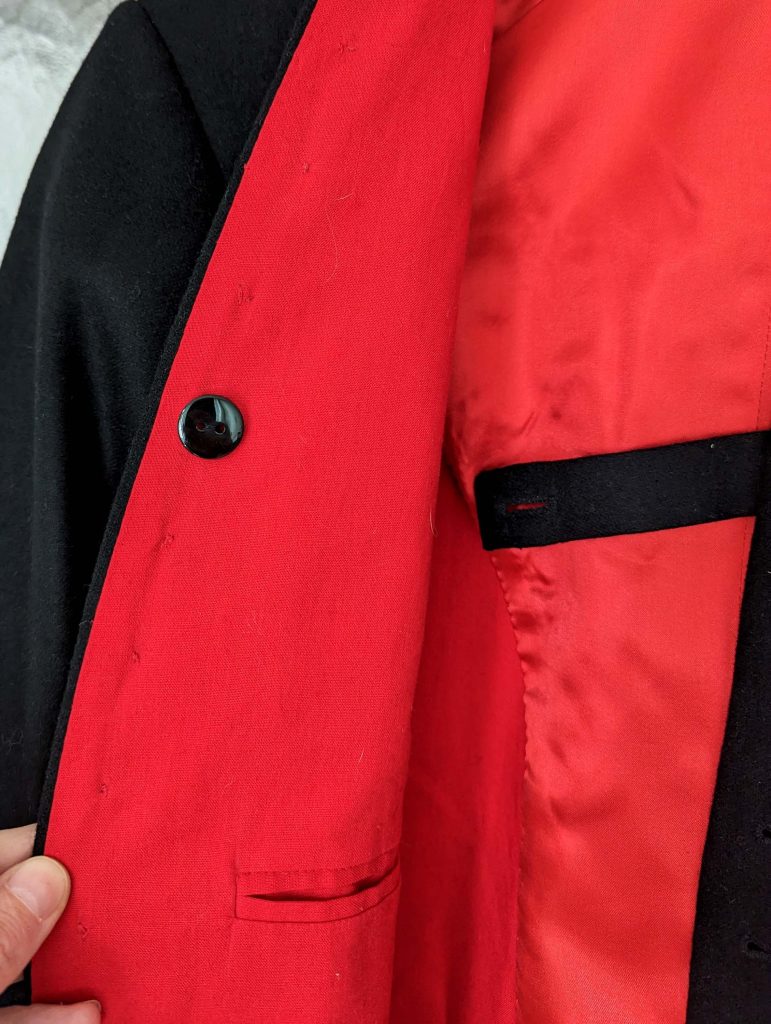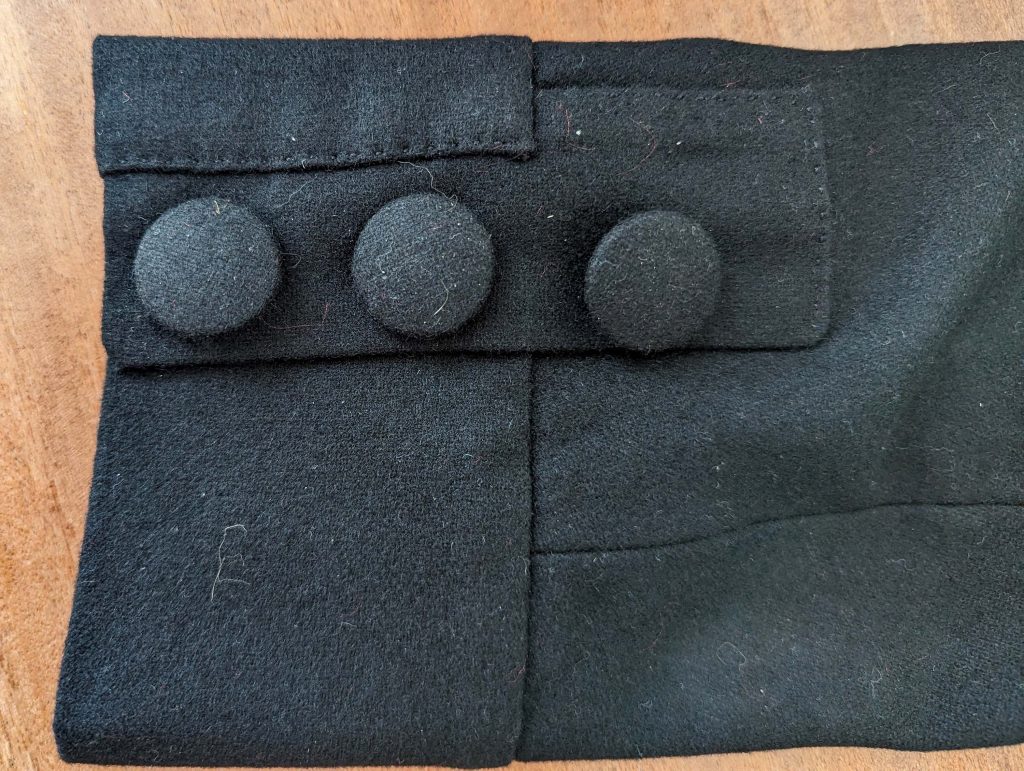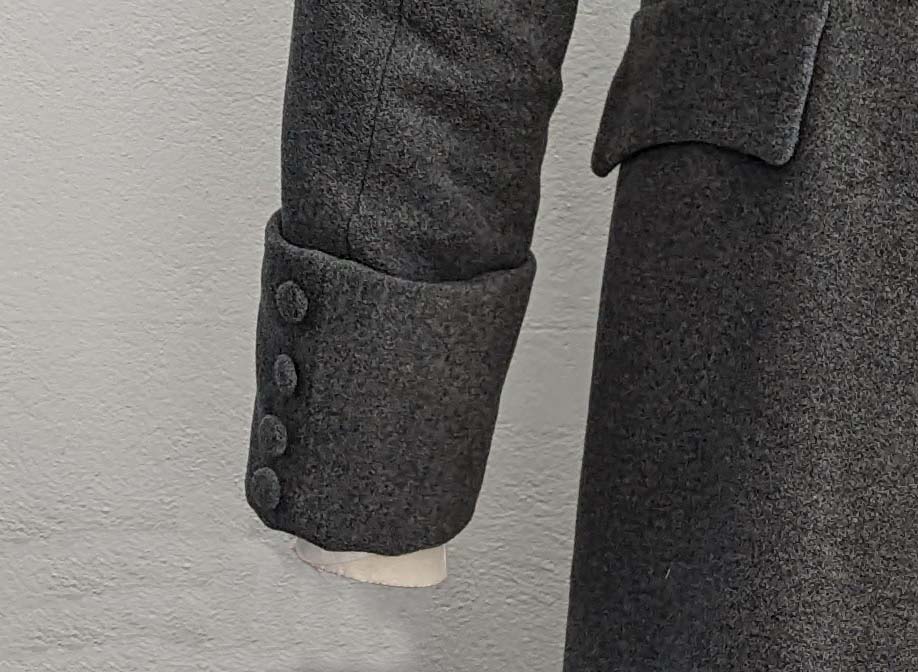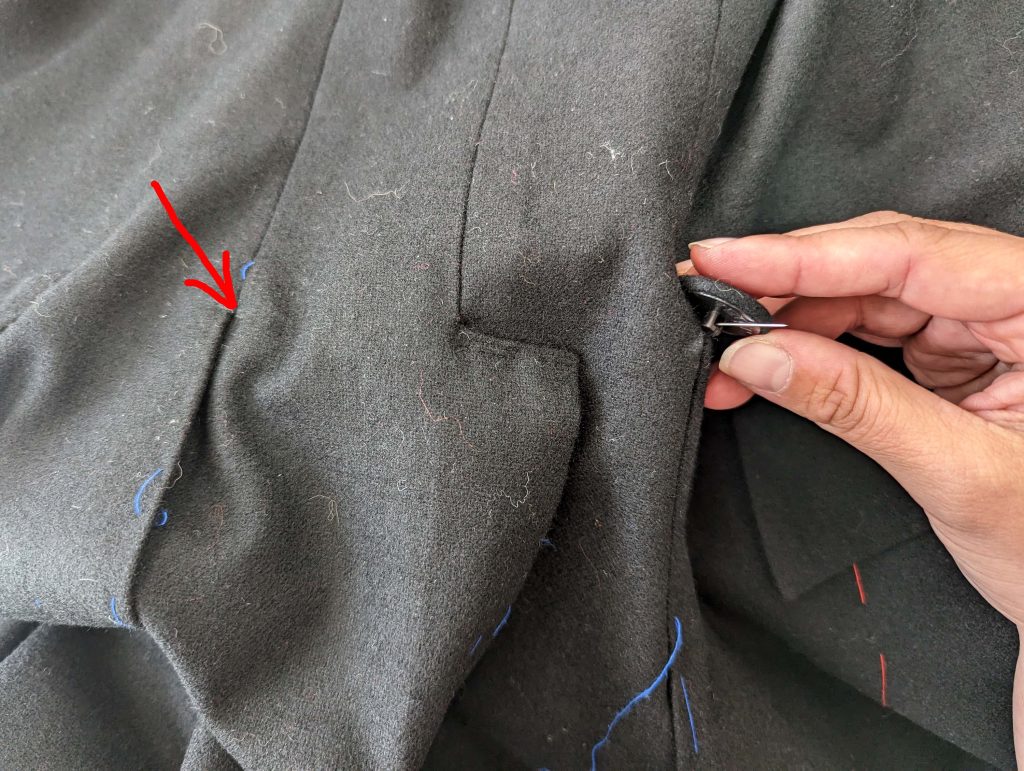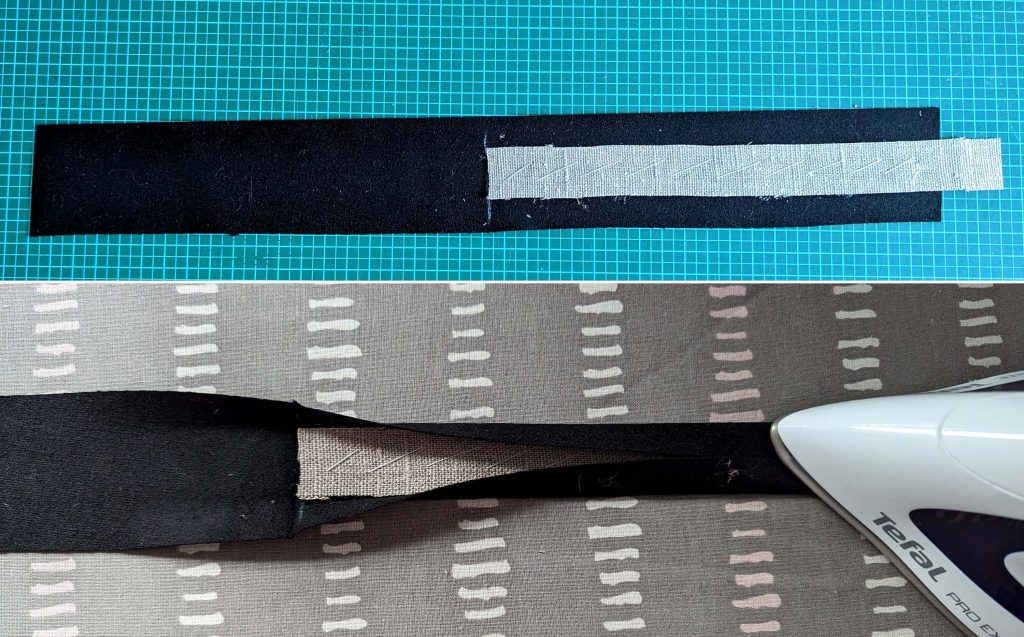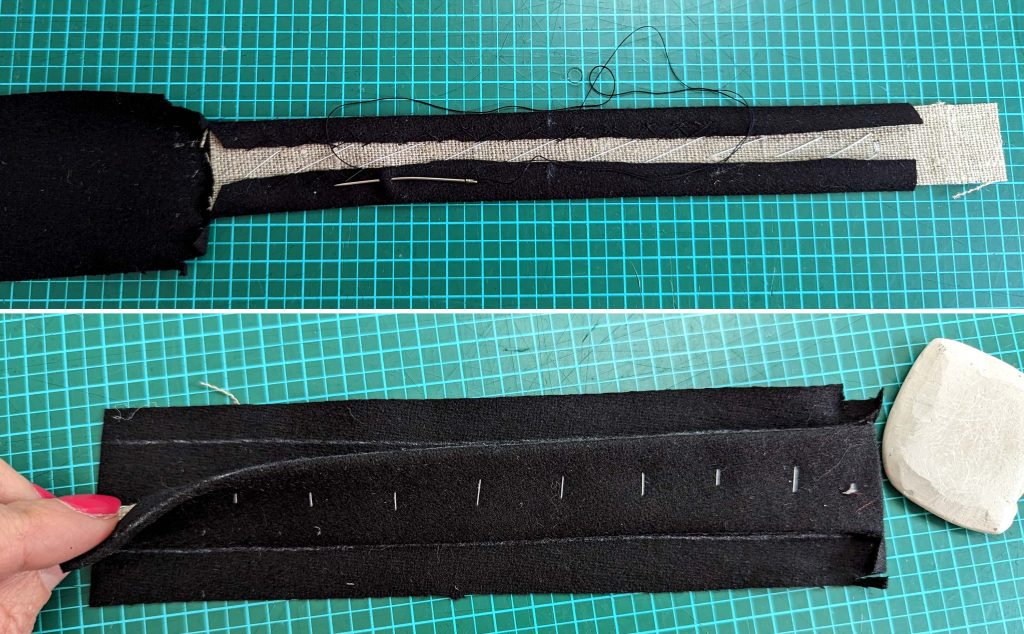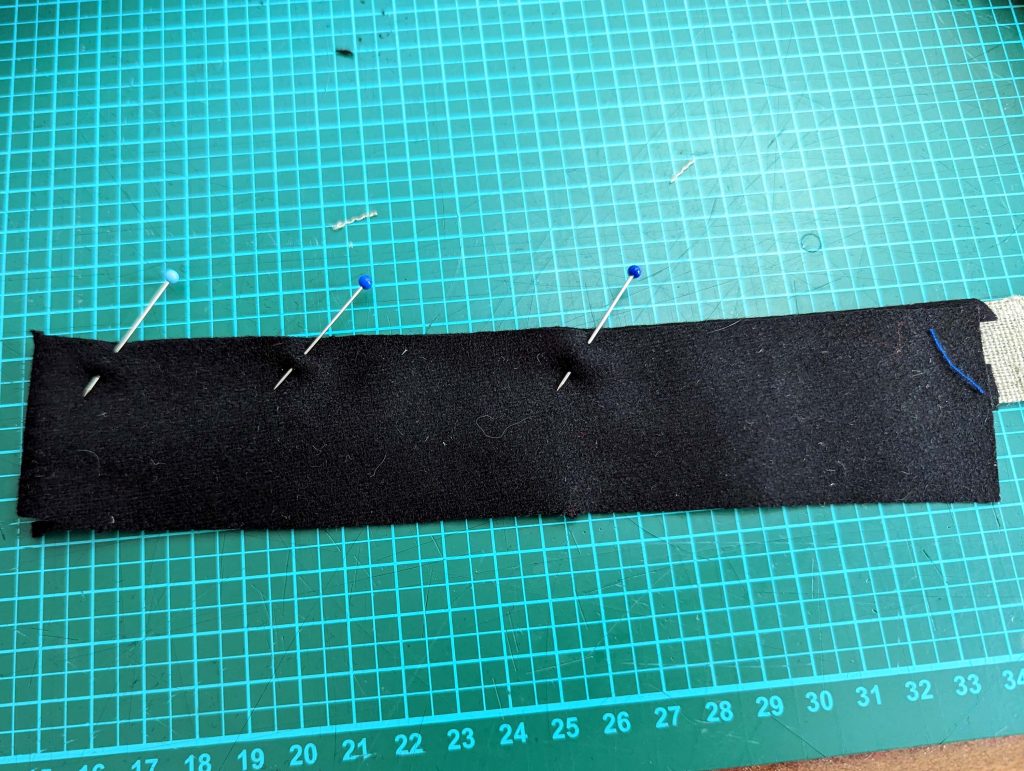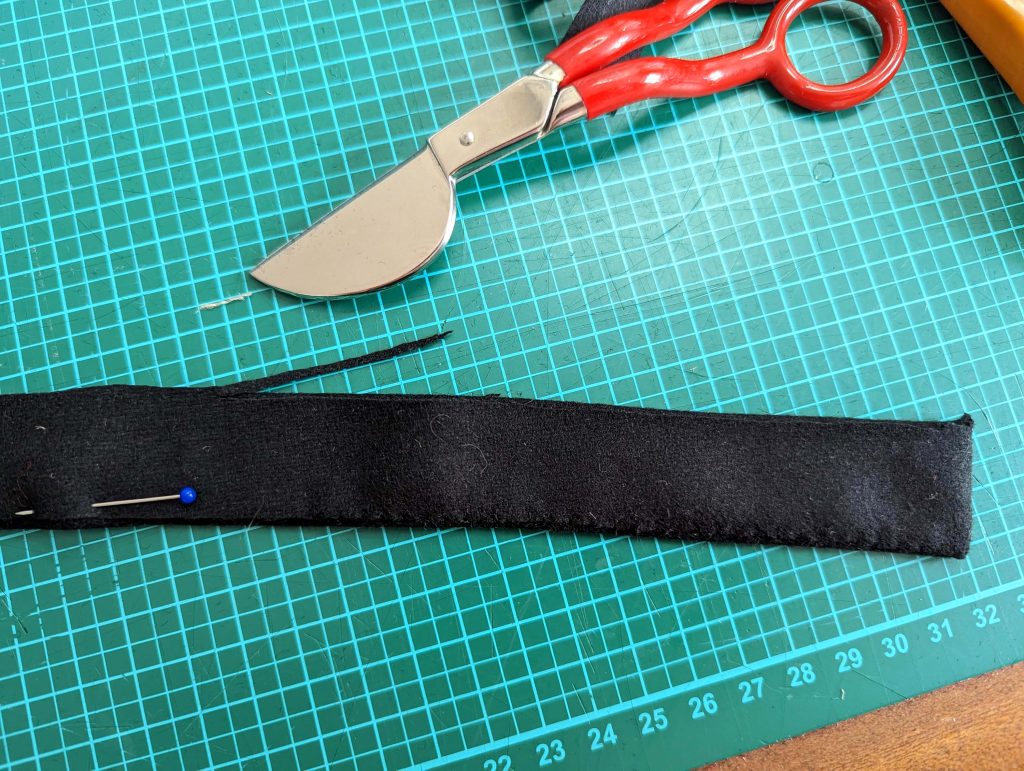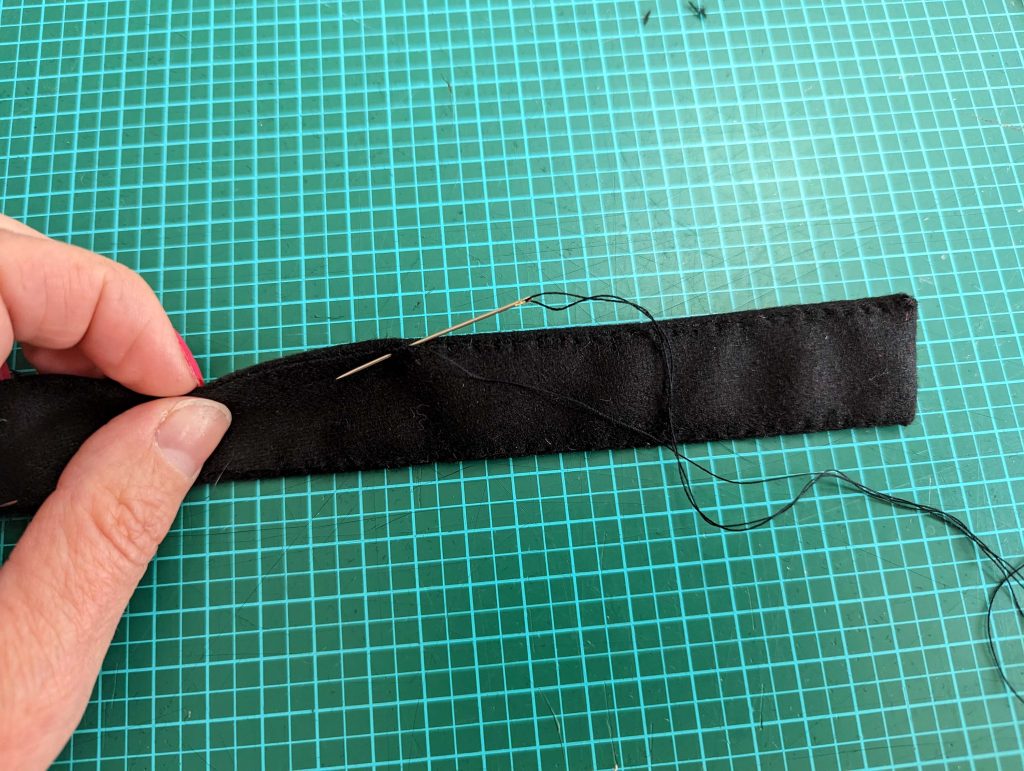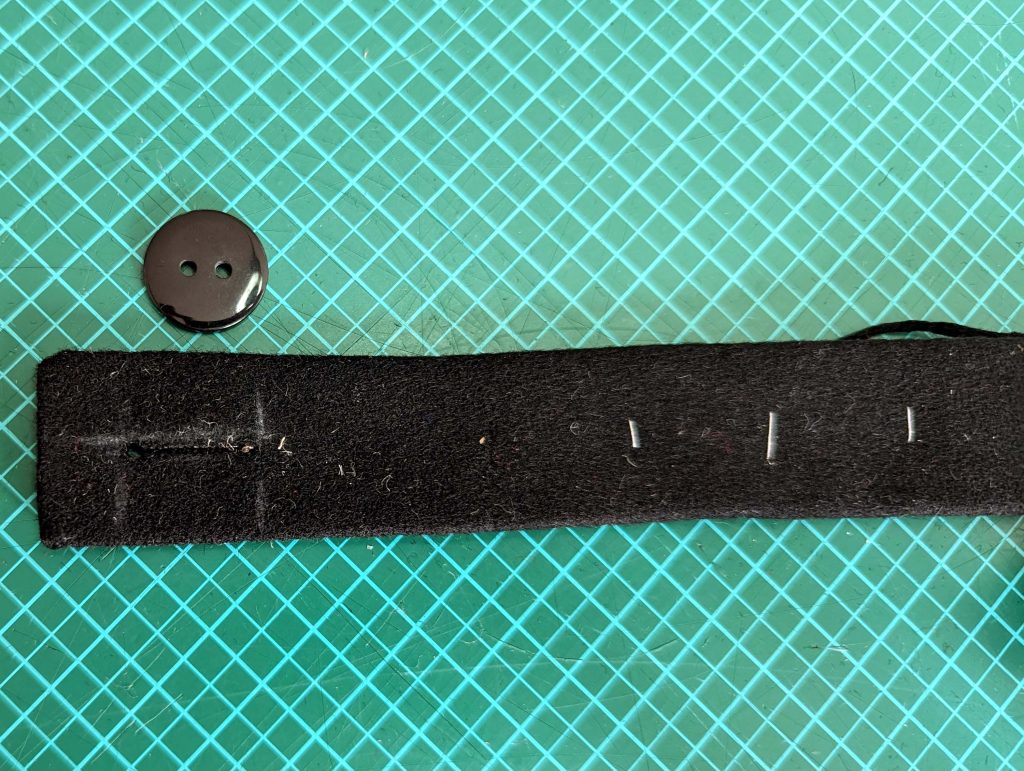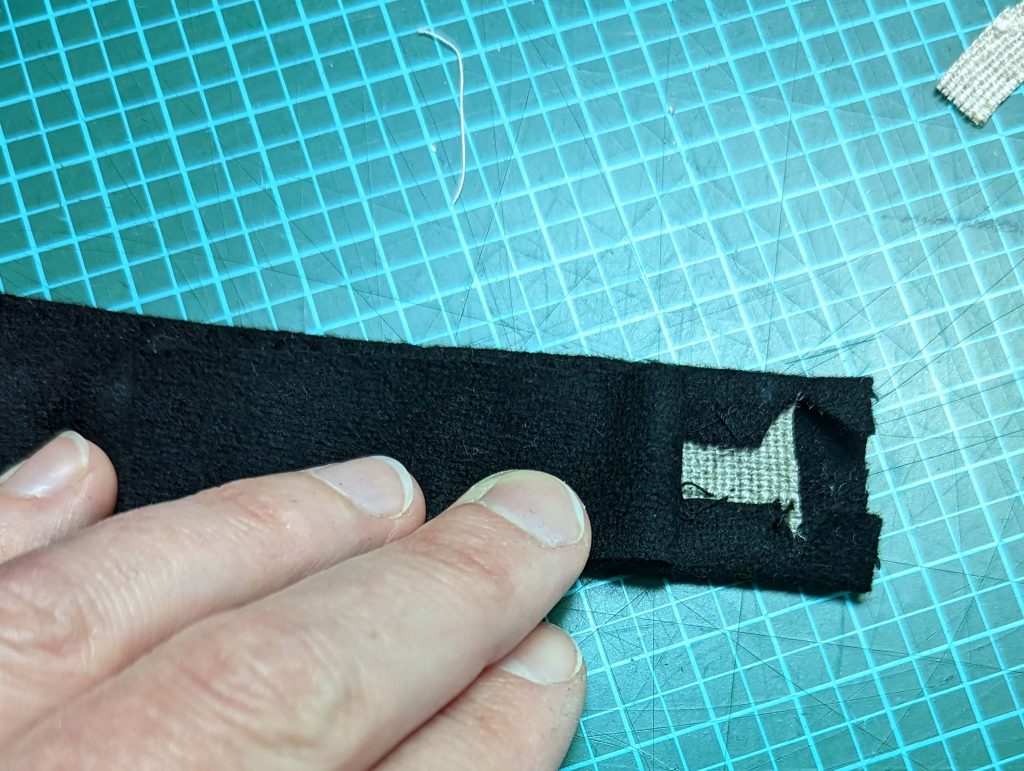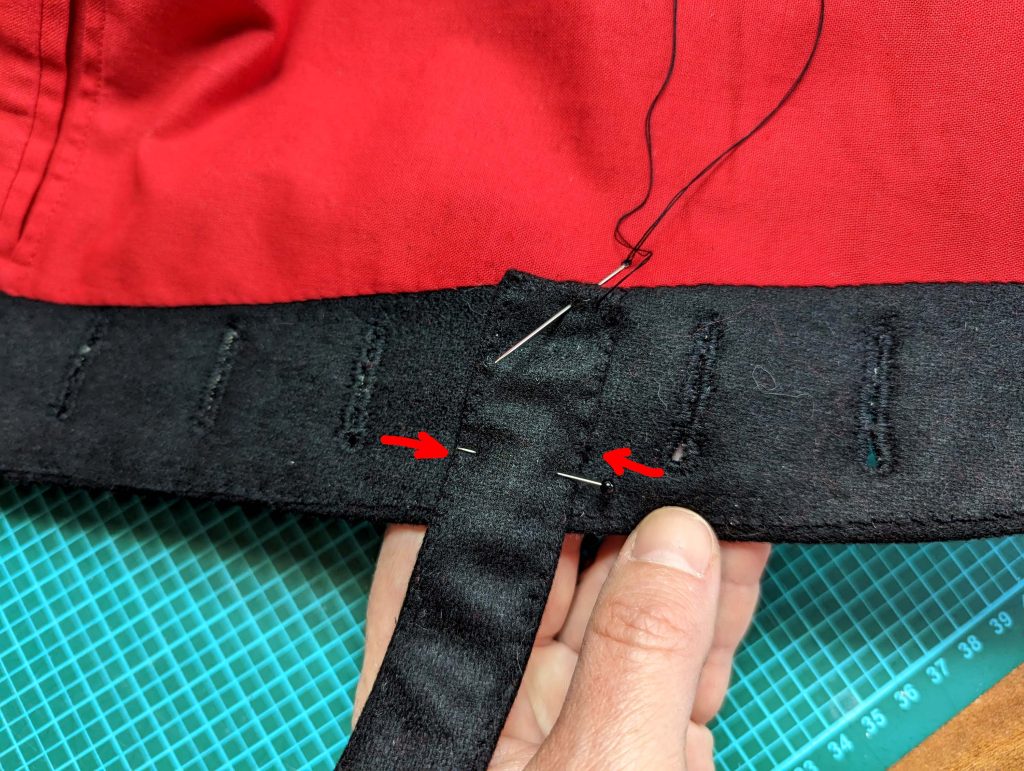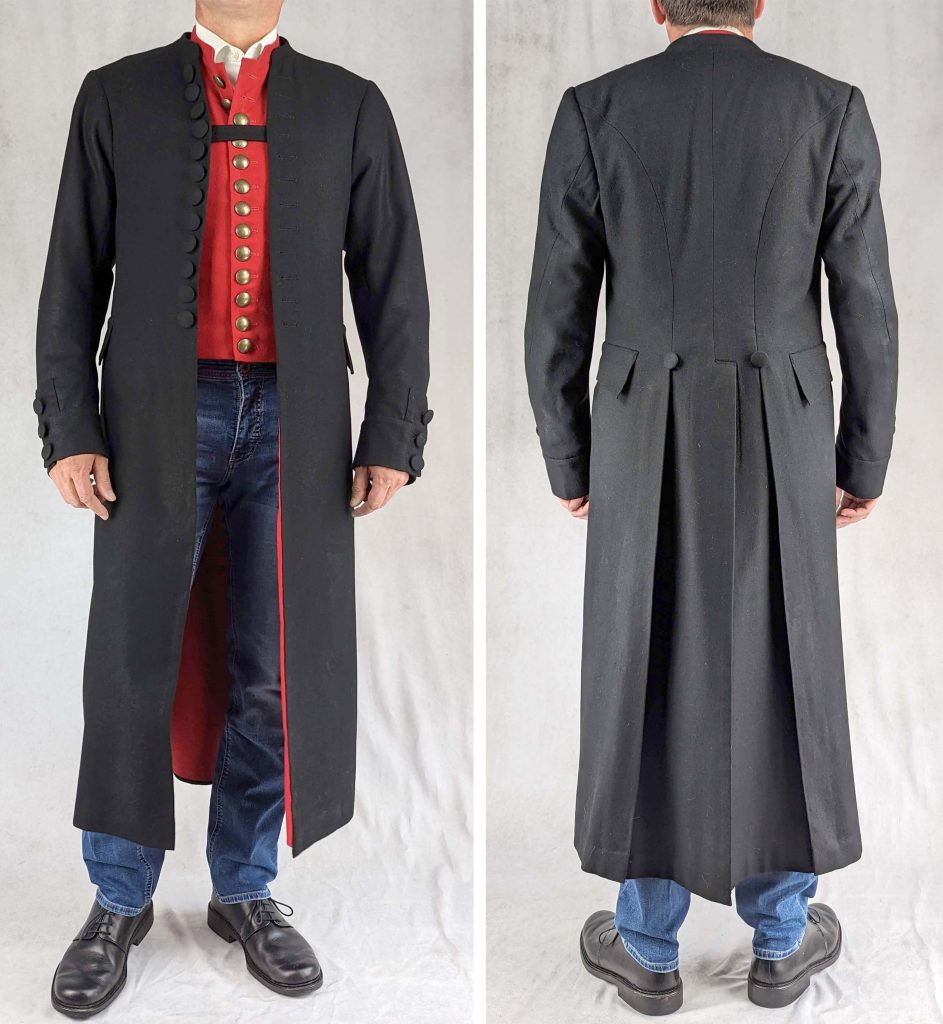Around 1901, fashions changed with the invention of the straight-front corset, thus a new silhouette developed. They pushed the body into a hollow back or S-bend accentuating the bust and hips. The illustrations of the artist Charles Dana Gibson immortalized the ideal look and can still be seen today.
The S-bend shape often was emphasized with wide belts. The belt pattern comes with the new pattern #0916 or can be downloaded here:
This is another illustrated instruction to supplement my sewing pattern. The belt pattern is available for free on my webshop: klick
(1) Take the belt pieces from the fashion fabric, interlining and lining (same fabric), and cut off the placket of ¾” (2cm) on the left back side only.
(2) Take the pieces for the interlining and mark the stitching line. Cut strips from fabric, twice as wide as the boning plus ¼” (5mm) ease for the bone casings. Turn in the edges the same way you´d prepare bias binding. Alternatively, use any narrow tape from your stock. Sew the casings to the right side of the interlining, where indicated on the pattern. The width of the casing should be as narrow that the boning can´t twist inside the tunnel. Insert the bones and close the casings carefully. Turn the seam allowances of the interlining towards the right side and press. Clip at the curves to lay flat. I decided to make the two belts, straight and the dip waist style.
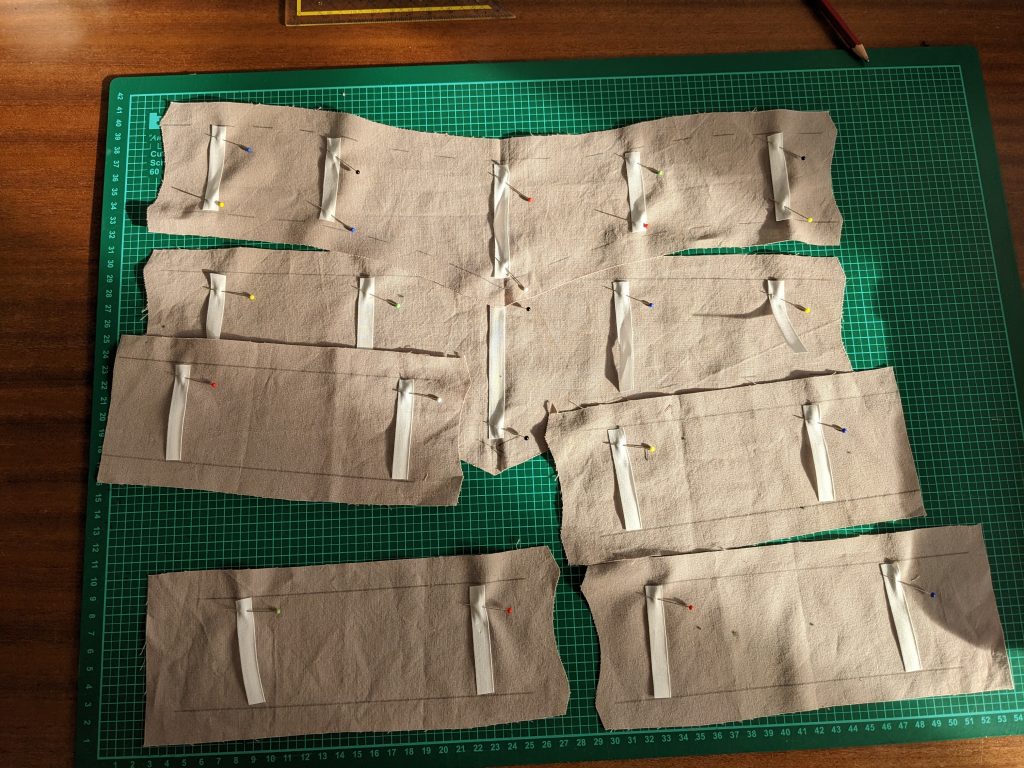
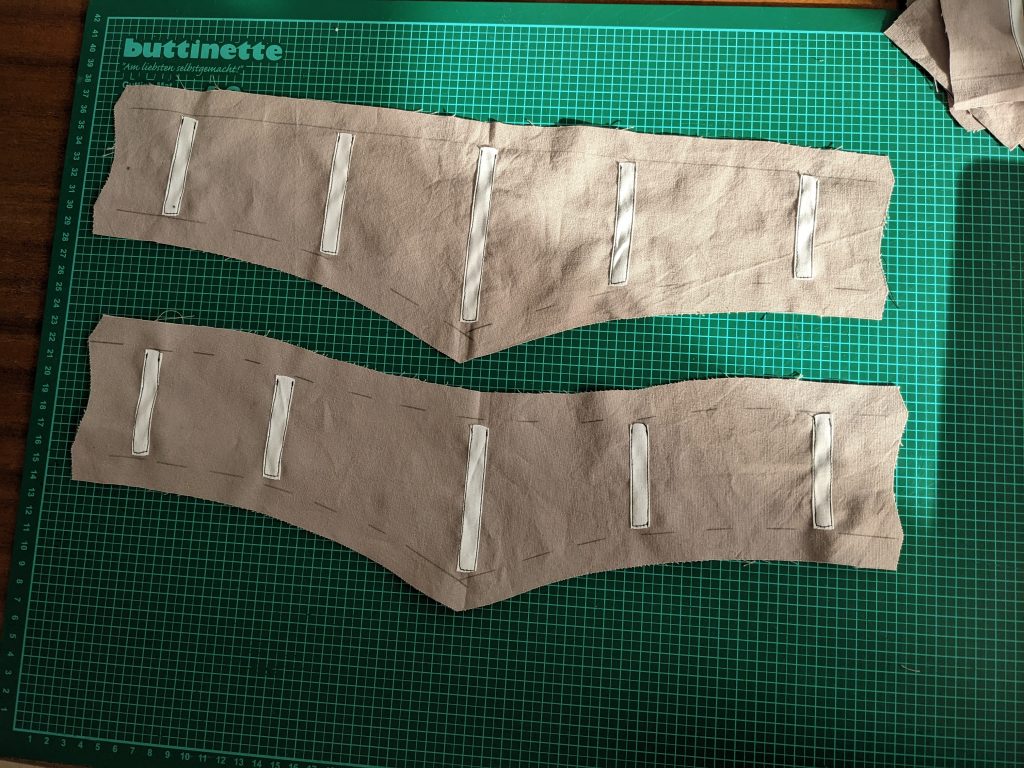
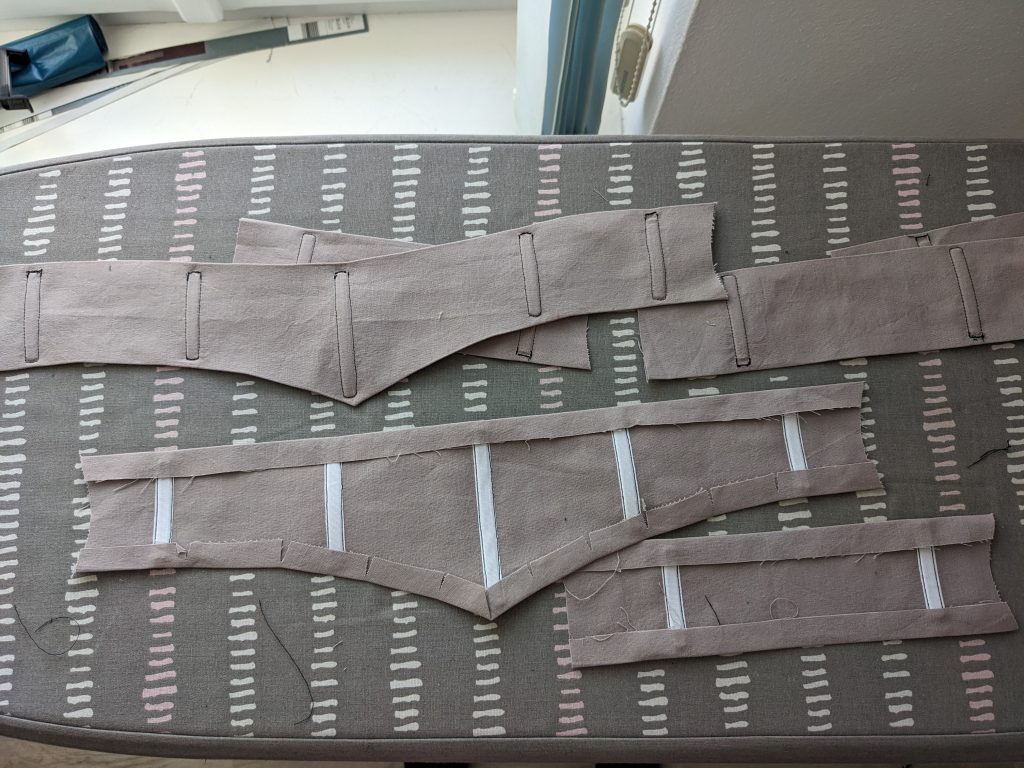
(3) Line up the interlining with the belt pieces from the fashion fabric, wrong sides together, and baste in place. Sew the side seams, right sides together. Trim back, notch the seam allowances as shown, and press open.
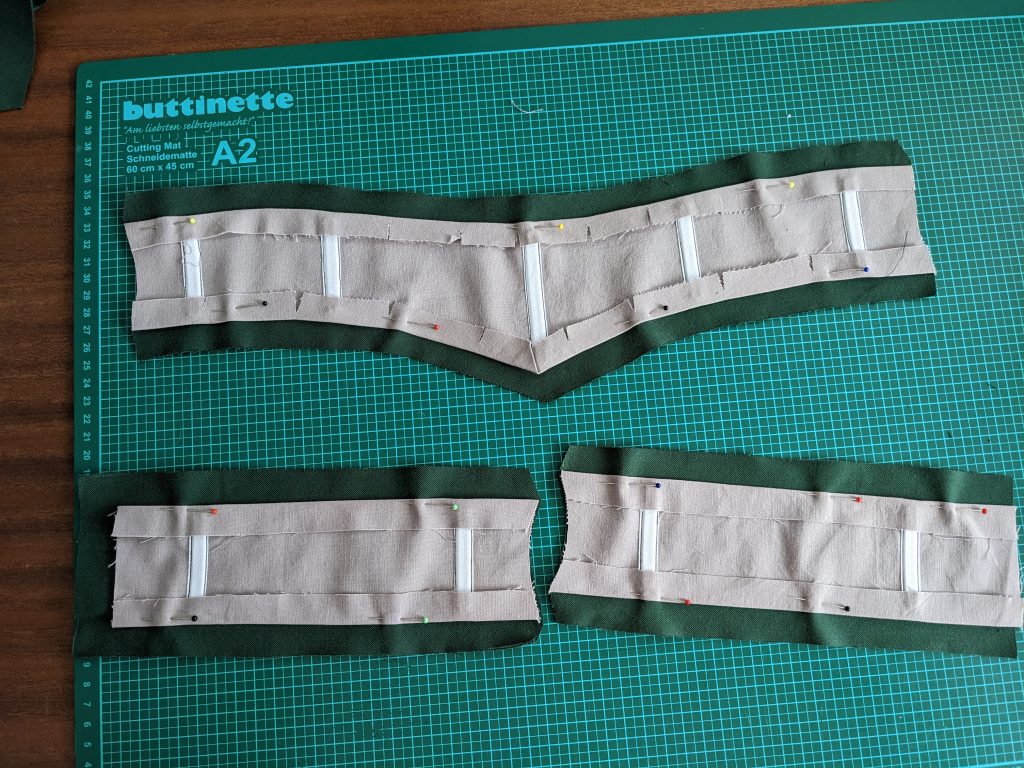
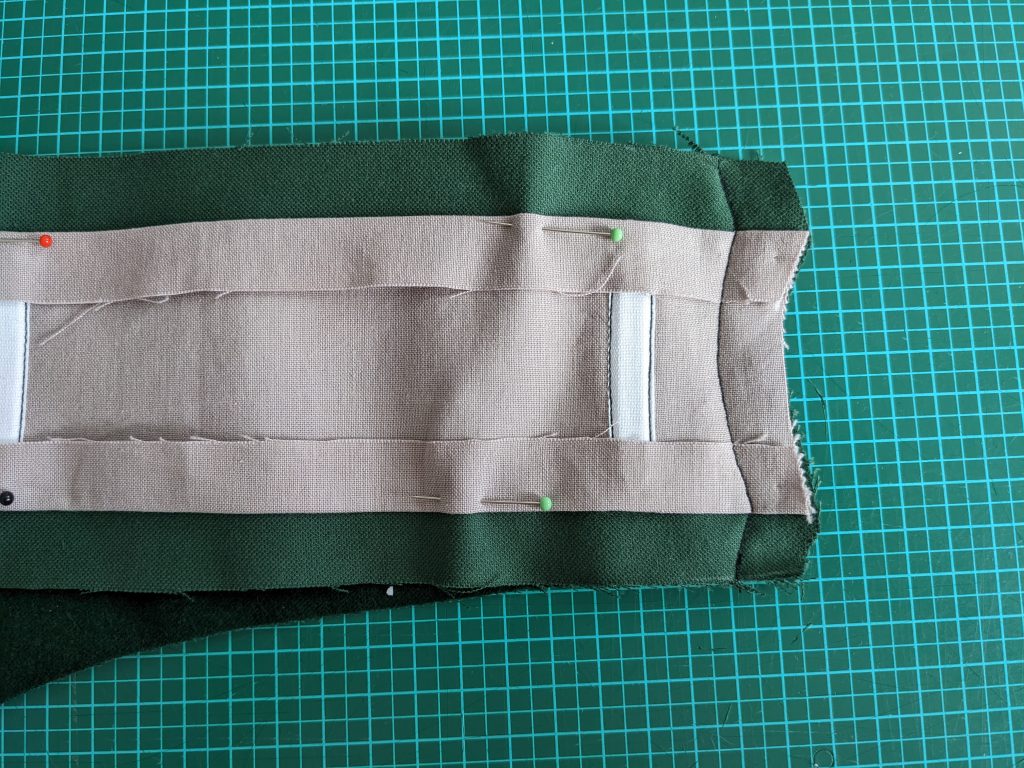
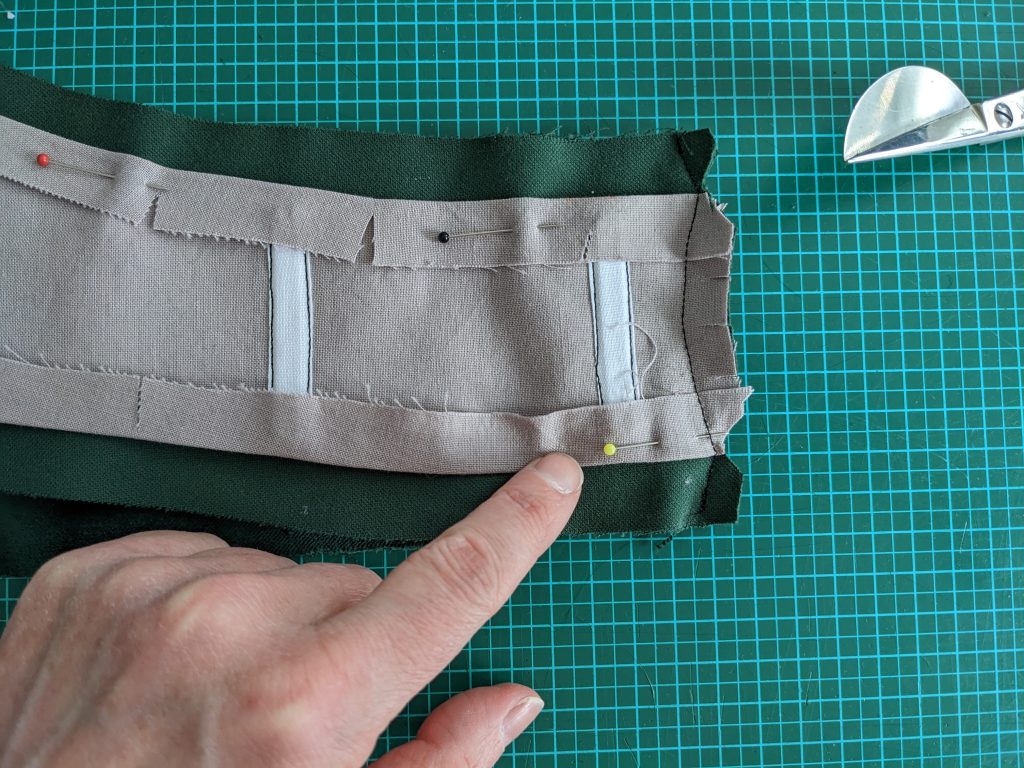
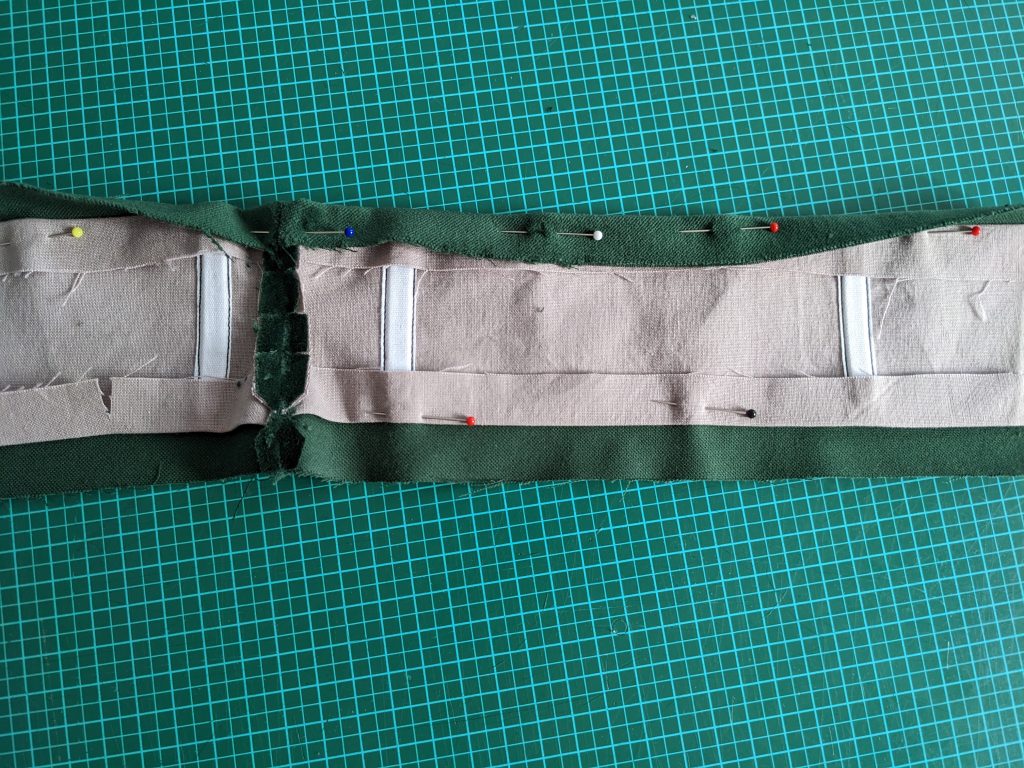
(4) Turn in the seam allowances of the belt from the fashion fabric around the interlining and catch stitch to the latter.
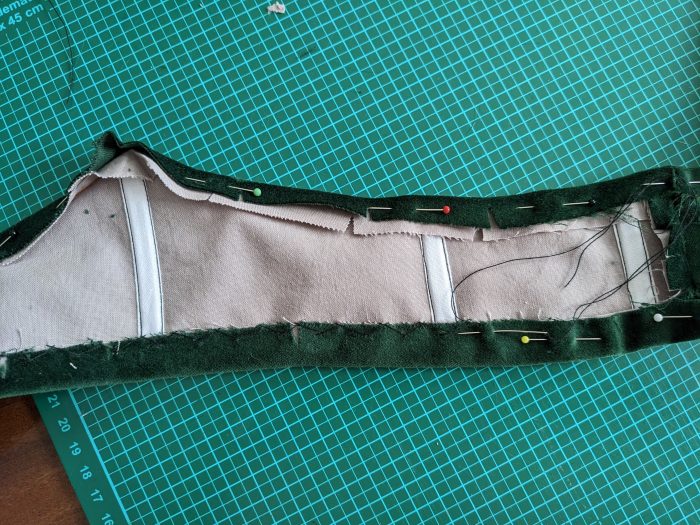
(5) Take the lining, sew the side seams and trim back the seam allowances in the same way as you did with the belt, press open. Turn in a seam allowance of ¾” (2cm) all around and clip at the curves to lay flat. Line up the lining with the belt, wrong sides together, with the edge of the fashion fabric extending past the lining about 1/8” (2mm). Fell stitch the lining to the belt without any stitches showing on the right fabric side.
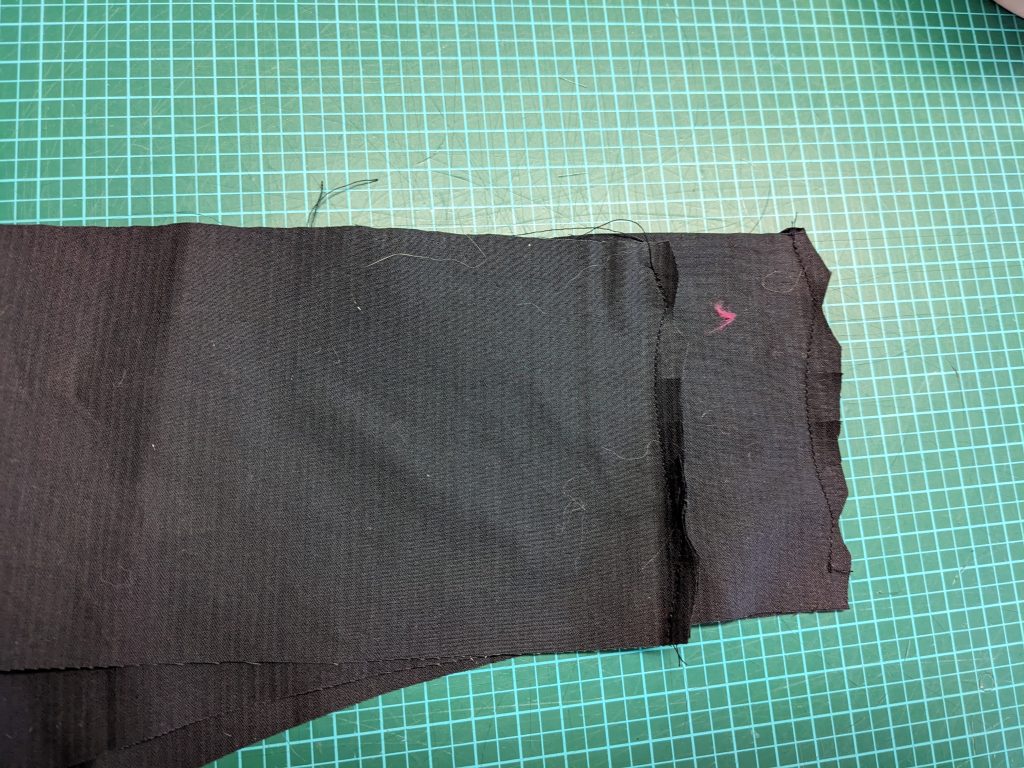
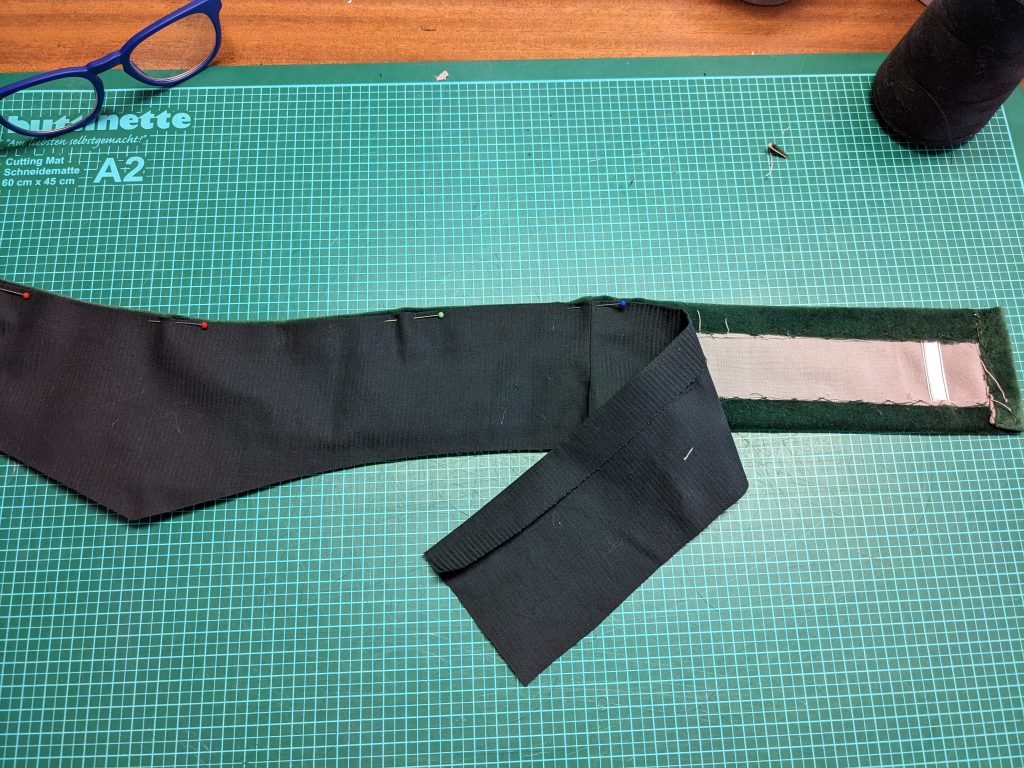
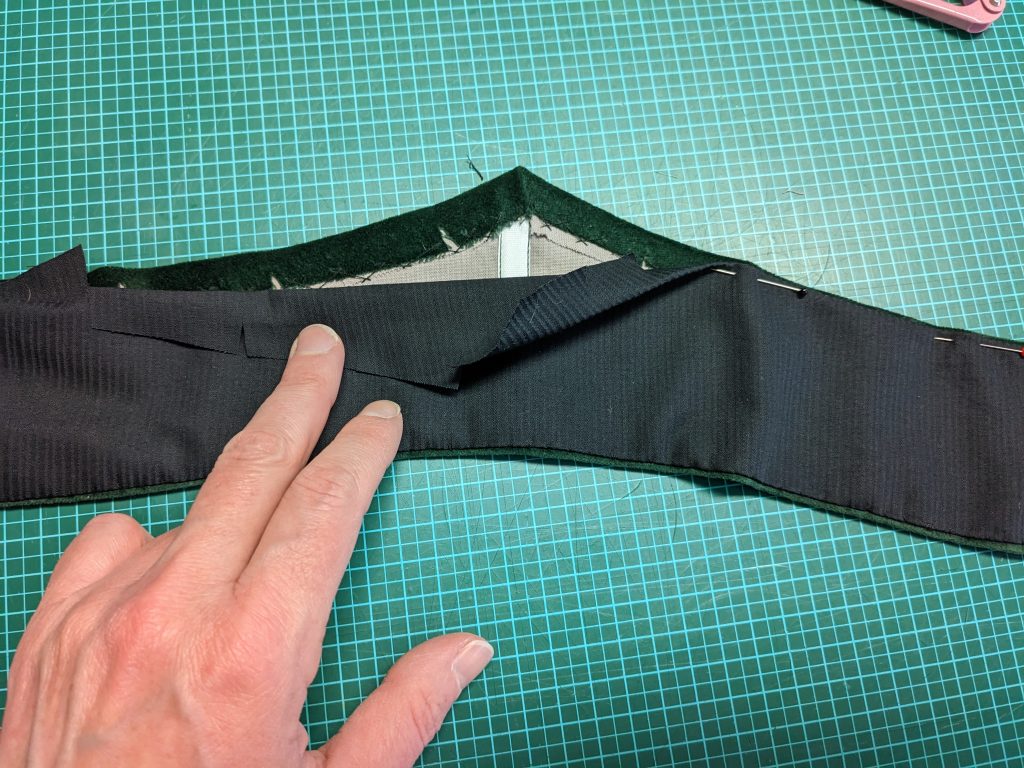
(6) Sew hooks to the right back edge and make thread bars along the left center back instead of metal eyes.
